|
|

|
Day 7, Sunday 29 September
Something Different…….. Today is the final day in at Eceabat but while our attention to the events during World War I are over, this is not planned to be a rest day and I would argue that it’s a grand finale as we go far further back in time in our quest for knowledge: Some 5,500 years in fact. After breakfast we head once again to Çanakkale by ferry but this time we take the car. The 9am crossing should avoid much of the weekend traffic. We pay the 61 Turkish lira fee and arrive in Çanakkale heading through the city and picking up the E87 we head south.
Troy Excavation Site…….. Realising quite early in the planning of this tour that Troy would be accessible, we waste little time in reaching this archaeological site. However, unlike our tour of Gallipoli there is an admission fee, of course, but we are given the option of adding the newly constructed museum at a discount for the combined visit. The 74 Turkish lira is more than I expected to pay but this is such an important site. Near the entrance to the site is a reconstruction of the famous wooden horse (Trojan Horse). Then, of course, there is the start of the walkway through the ruin and evidence of the considerable excavations that have taken place here since 1865. The various stages of construction of Troy in prehistory can be seen from the excavation pits and it was soon discovered that the city was occupied for a very long time by succeeding empires, culminating with the Romans. Working our way along the walkway and reading the signboards that are in Turkish and English takes more time than expected. It would not be an exaggeration to suggest three hours is needed at this site. What is remarkable is that a civilisation existed here in the Bronze Age from as early as 3500 BC. As we walk around noting examples of buildings dating from that time through Troy I to Troy IX, we have walked through time spanning some 4,000 years. Understandably, so much knowledge has been gained over the last 150 years from excavations at this site that I can only briefly summarise it here but refer the reader to at least consult Wikipedia and other souces to provided that detail as I have done.
Something Different…….. Today is the final day in at Eceabat but while our attention to the events during World War I are over, this is not planned to be a rest day and I would argue that it’s a grand finale as we go far further back in time in our quest for knowledge: Some 5,500 years in fact. After breakfast we head once again to Çanakkale by ferry but this time we take the car. The 9am crossing should avoid much of the weekend traffic. We pay the 61 Turkish lira fee and arrive in Çanakkale heading through the city and picking up the E87 we head south.
Troy Excavation Site…….. Realising quite early in the planning of this tour that Troy would be accessible, we waste little time in reaching this archaeological site. However, unlike our tour of Gallipoli there is an admission fee, of course, but we are given the option of adding the newly constructed museum at a discount for the combined visit. The 74 Turkish lira is more than I expected to pay but this is such an important site. Near the entrance to the site is a reconstruction of the famous wooden horse (Trojan Horse). Then, of course, there is the start of the walkway through the ruin and evidence of the considerable excavations that have taken place here since 1865. The various stages of construction of Troy in prehistory can be seen from the excavation pits and it was soon discovered that the city was occupied for a very long time by succeeding empires, culminating with the Romans. Working our way along the walkway and reading the signboards that are in Turkish and English takes more time than expected. It would not be an exaggeration to suggest three hours is needed at this site. What is remarkable is that a civilisation existed here in the Bronze Age from as early as 3500 BC. As we walk around noting examples of buildings dating from that time through Troy I to Troy IX, we have walked through time spanning some 4,000 years. Understandably, so much knowledge has been gained over the last 150 years from excavations at this site that I can only briefly summarise it here but refer the reader to at least consult Wikipedia and other souces to provided that detail as I have done.
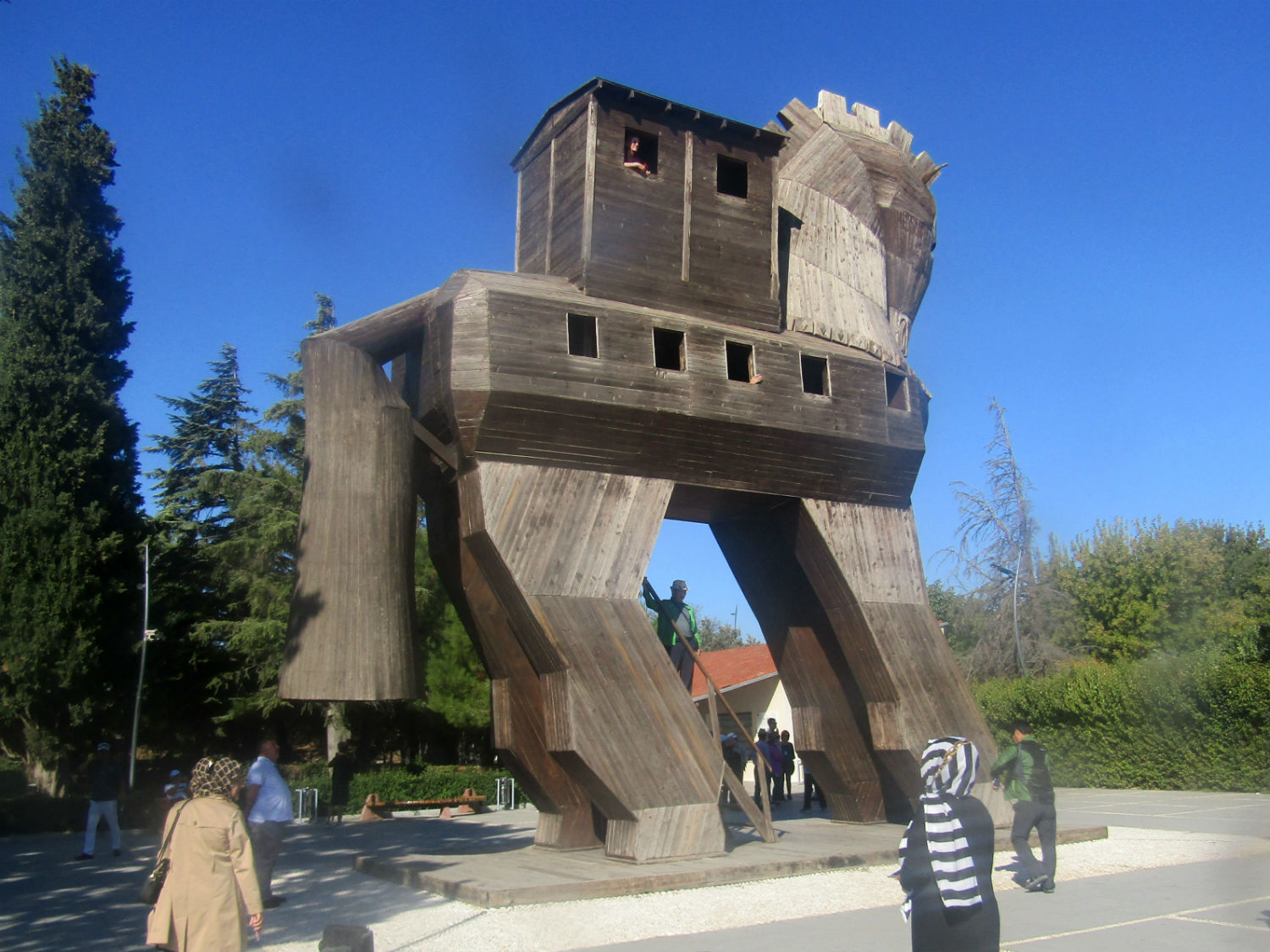
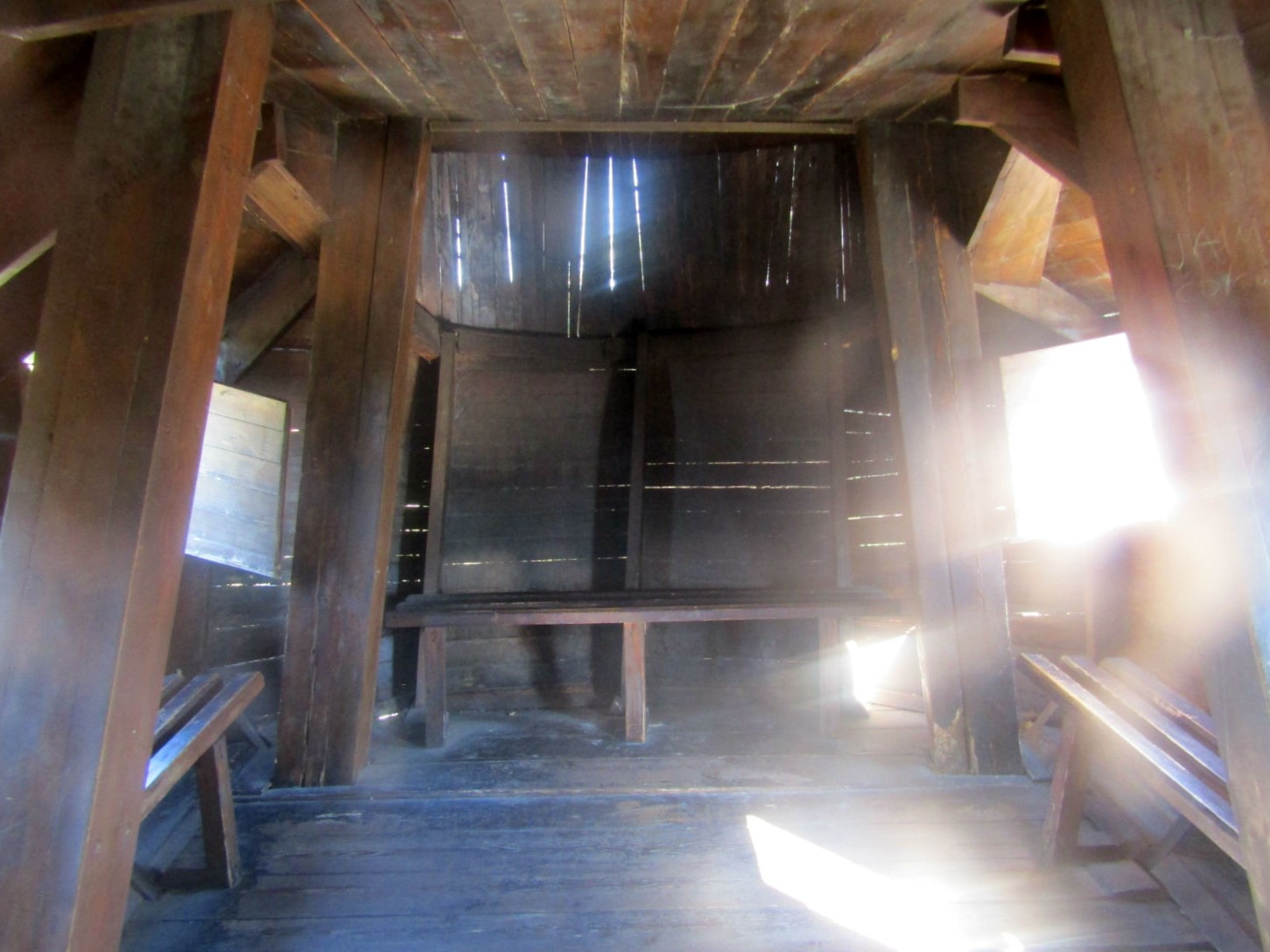
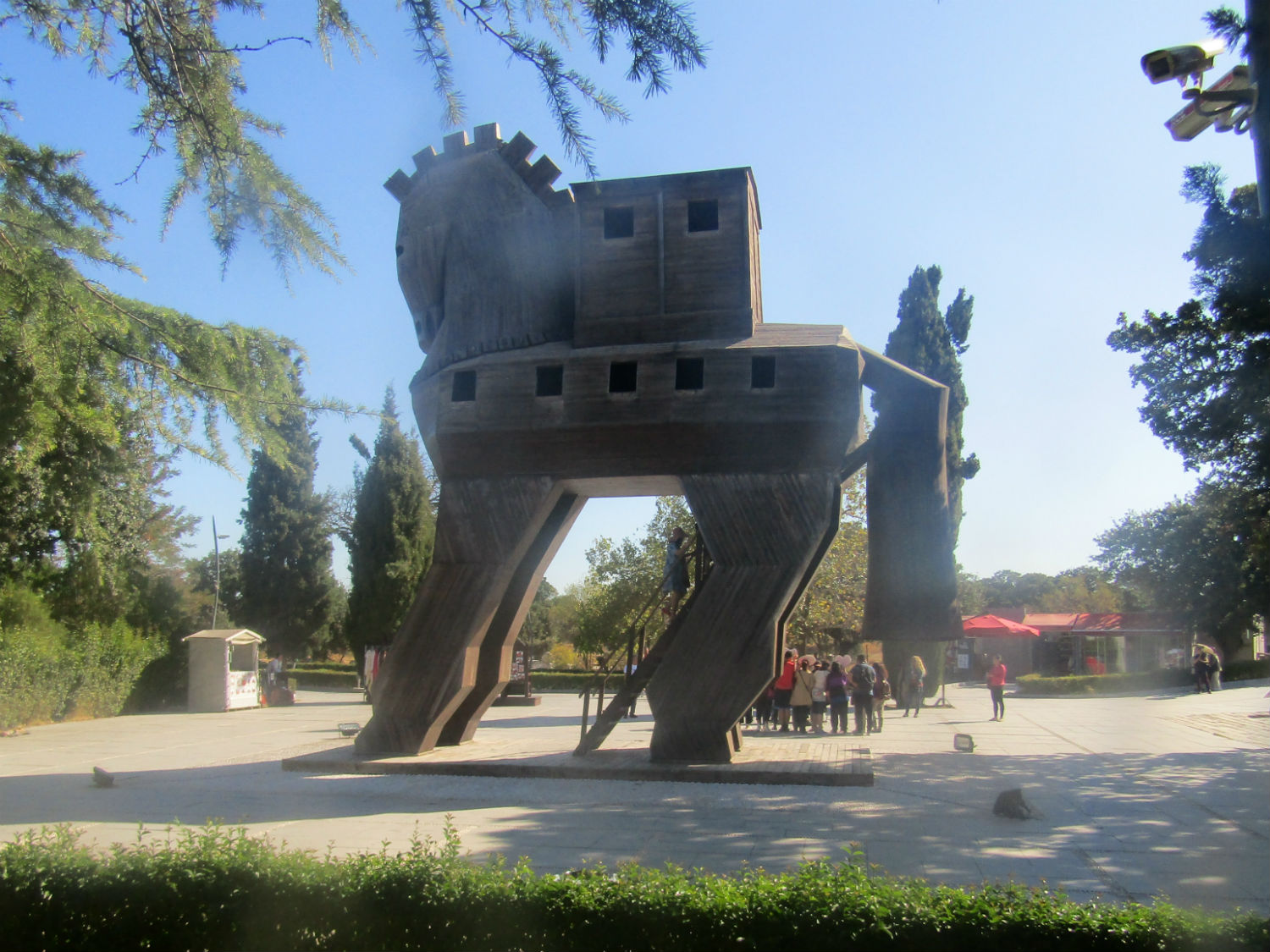
Model of the Trojan Horse at the Ancient City of Troy
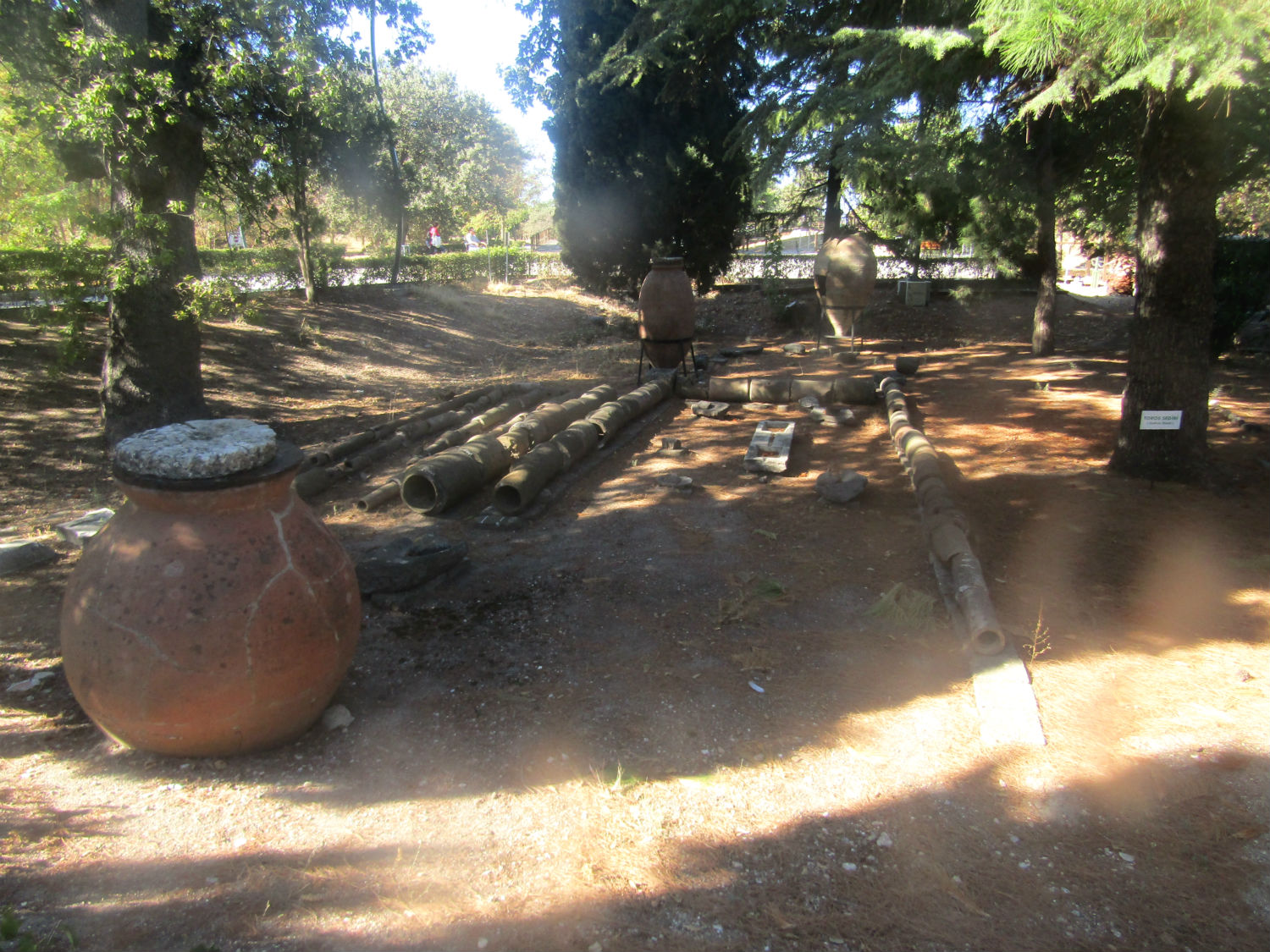

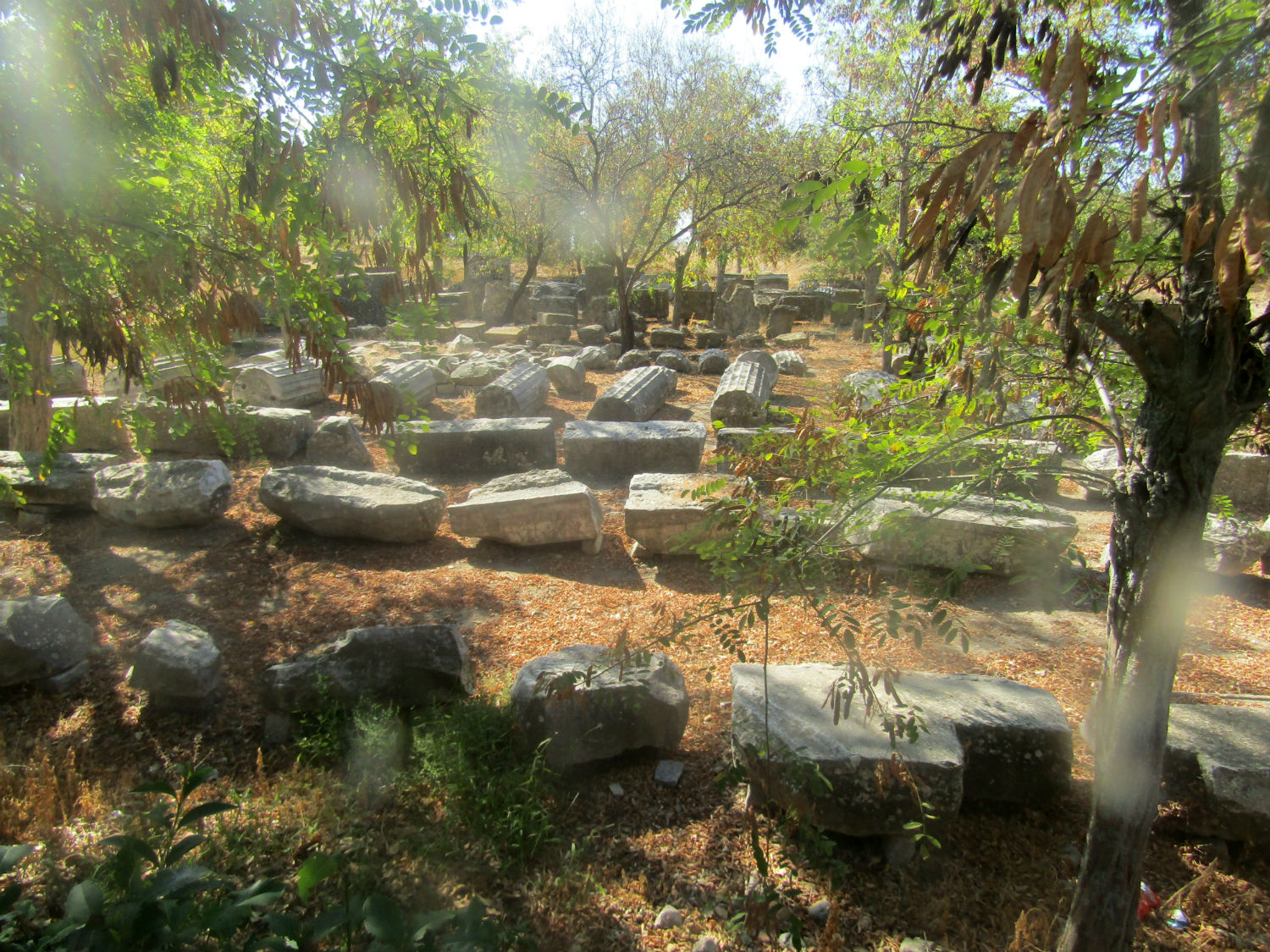
Pithos Garden
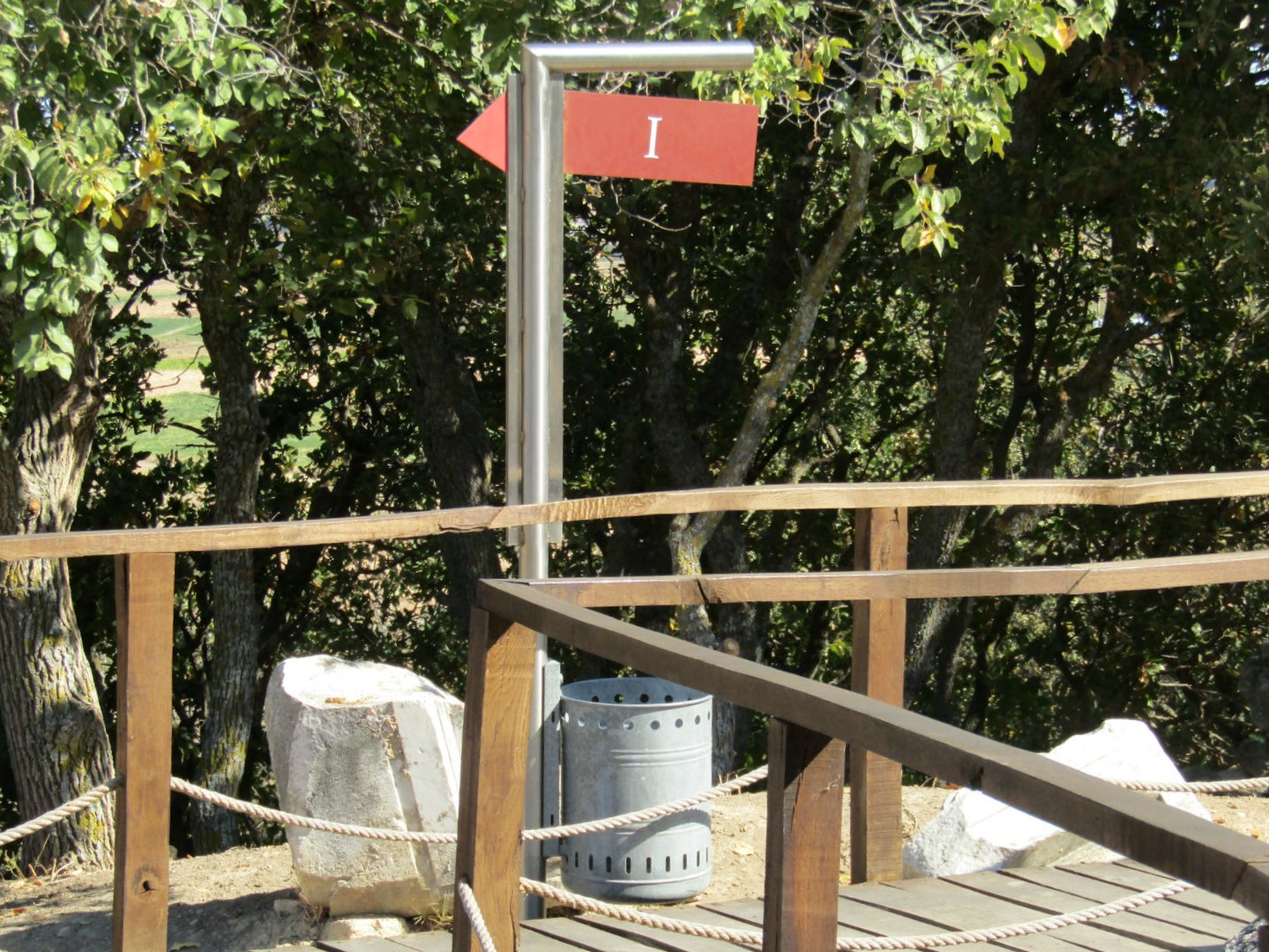
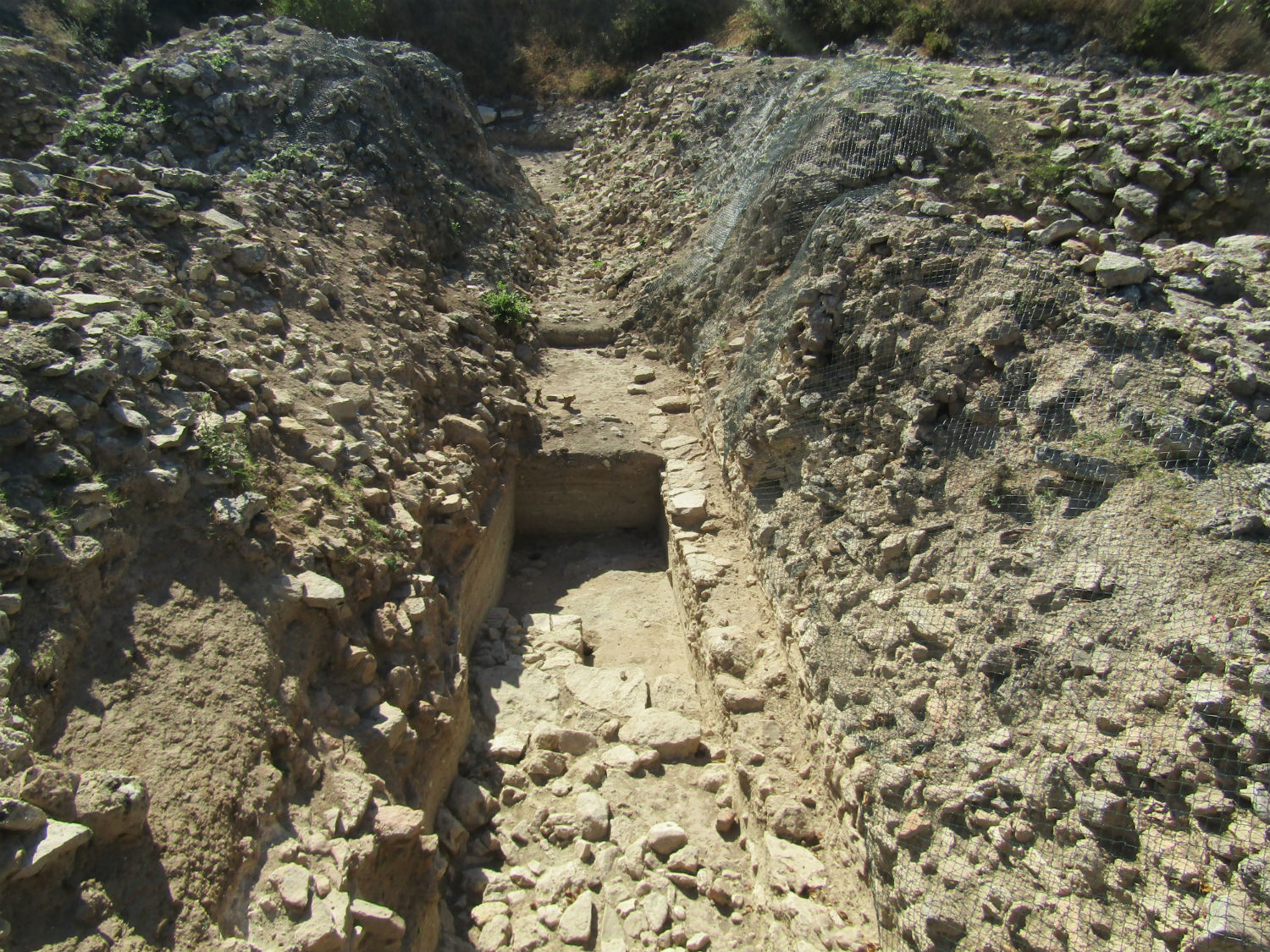

City Wall - Troy I (centre), Palace of Troy II (right)
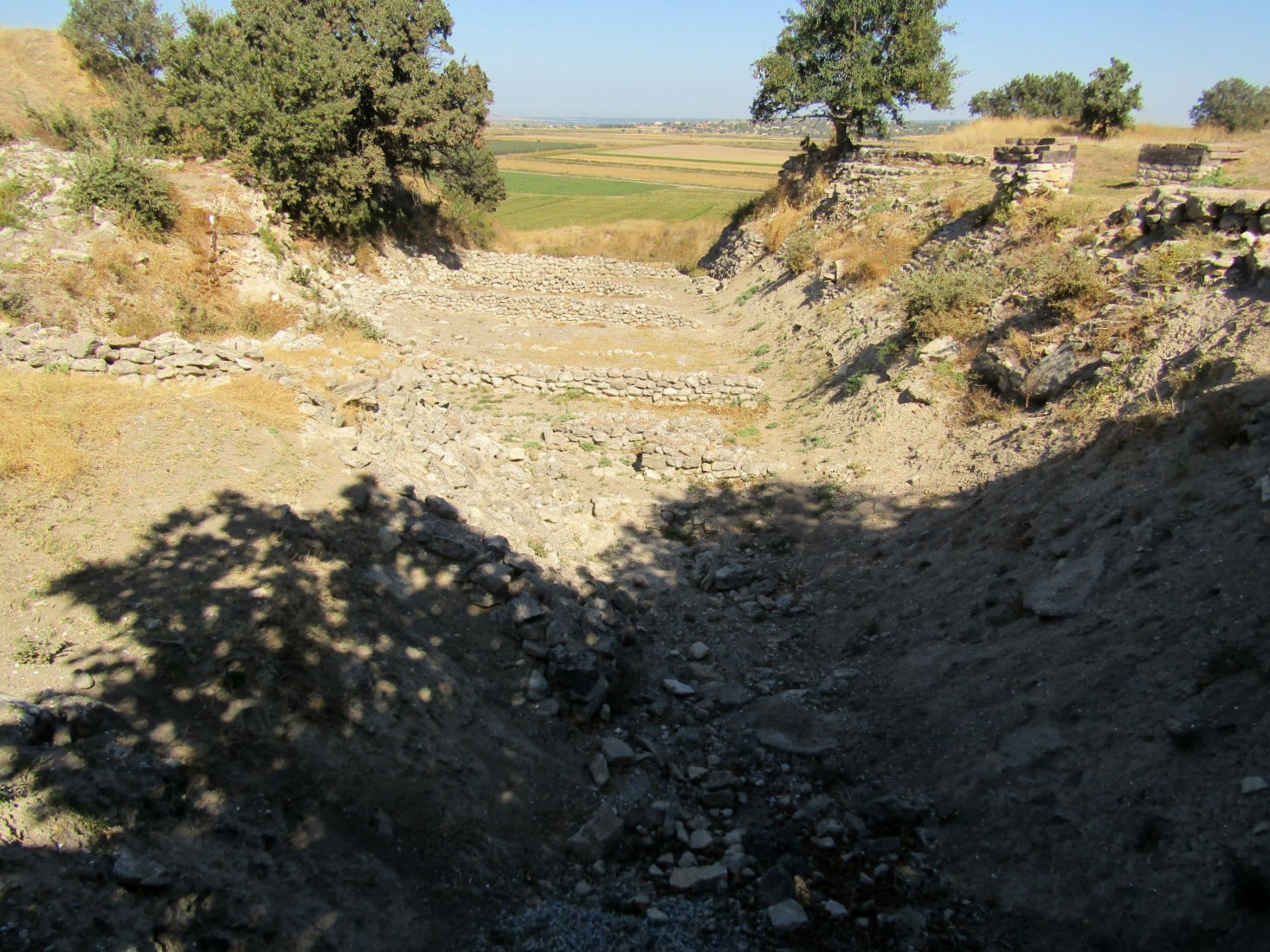
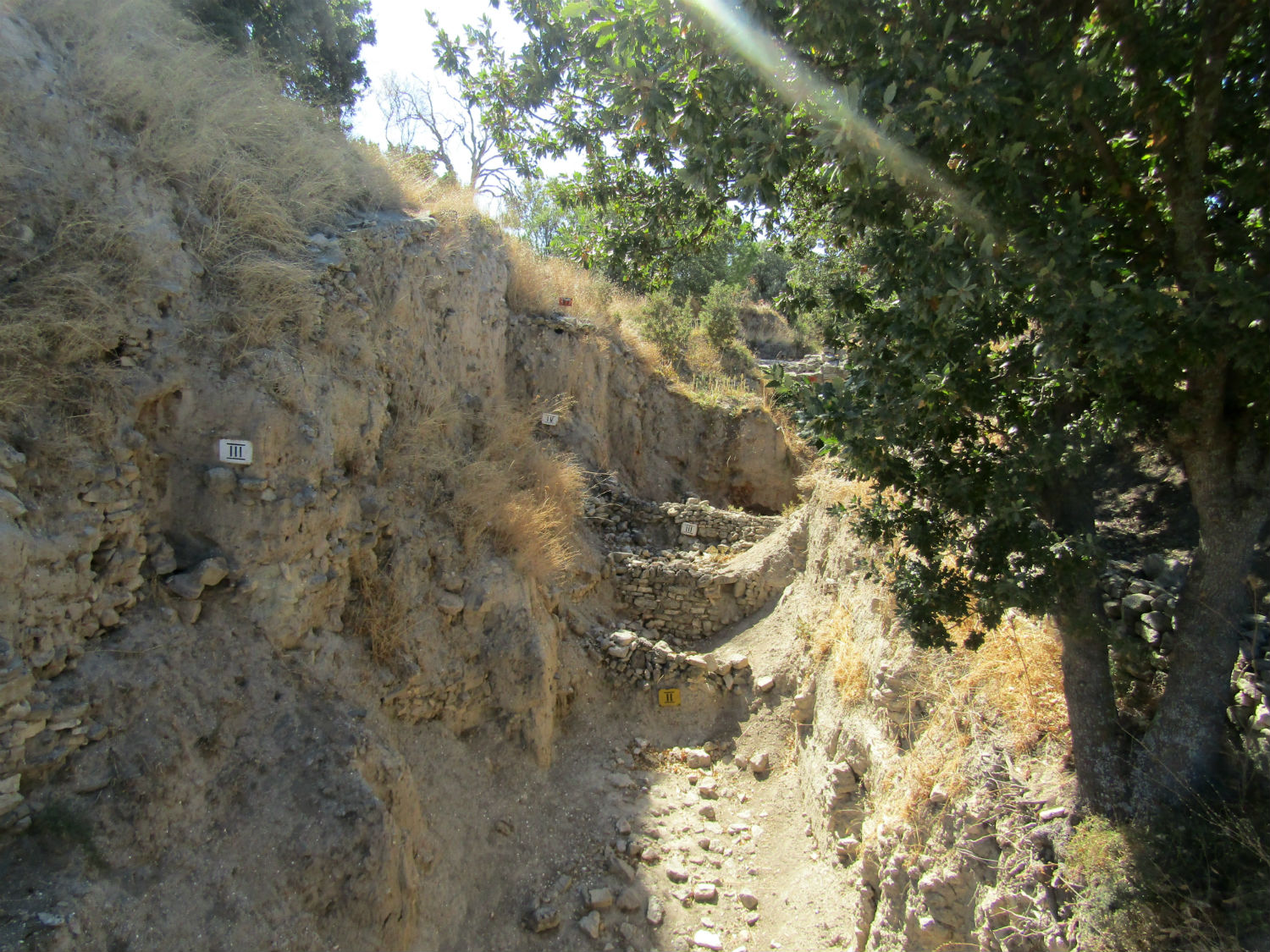

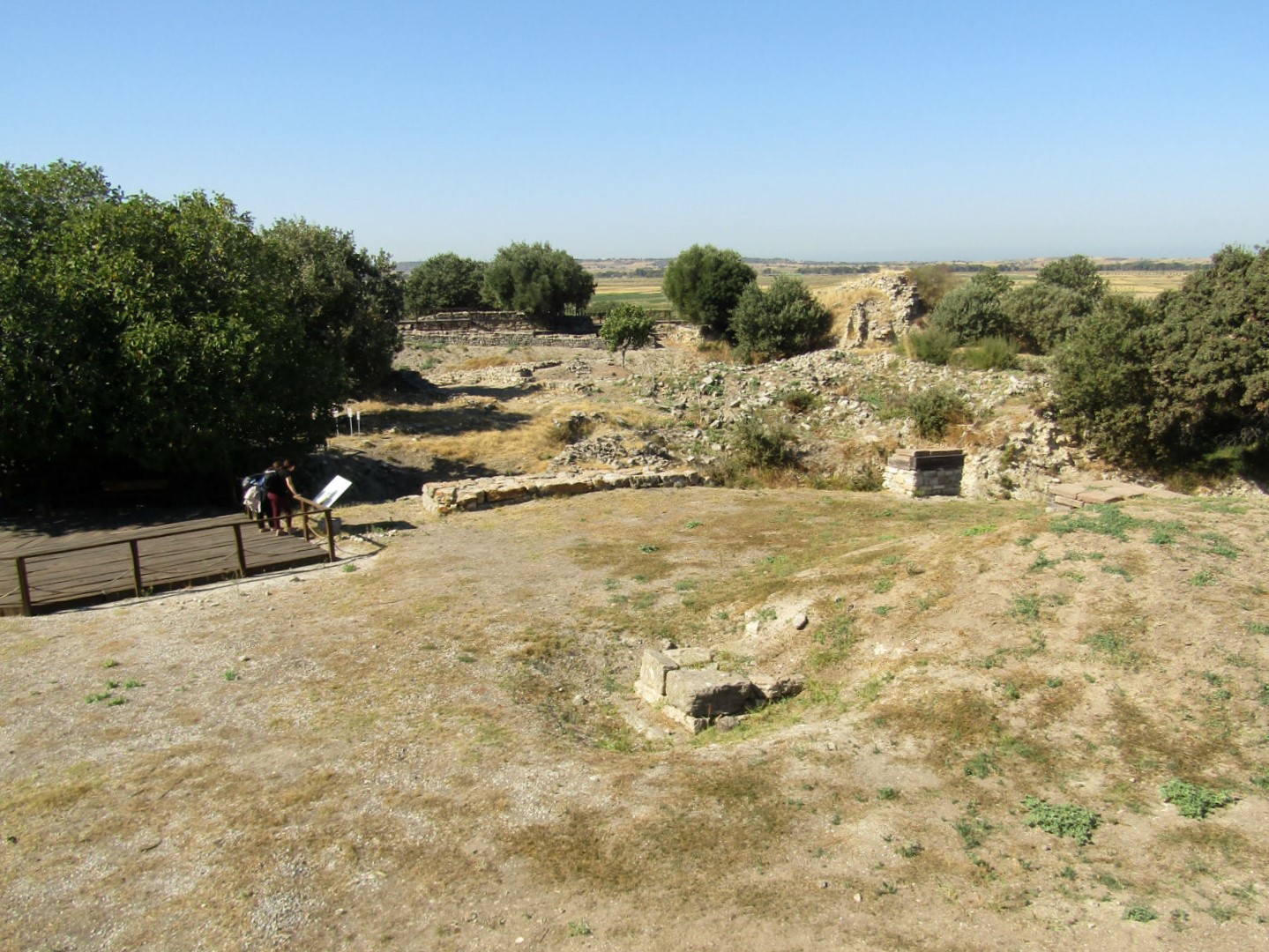

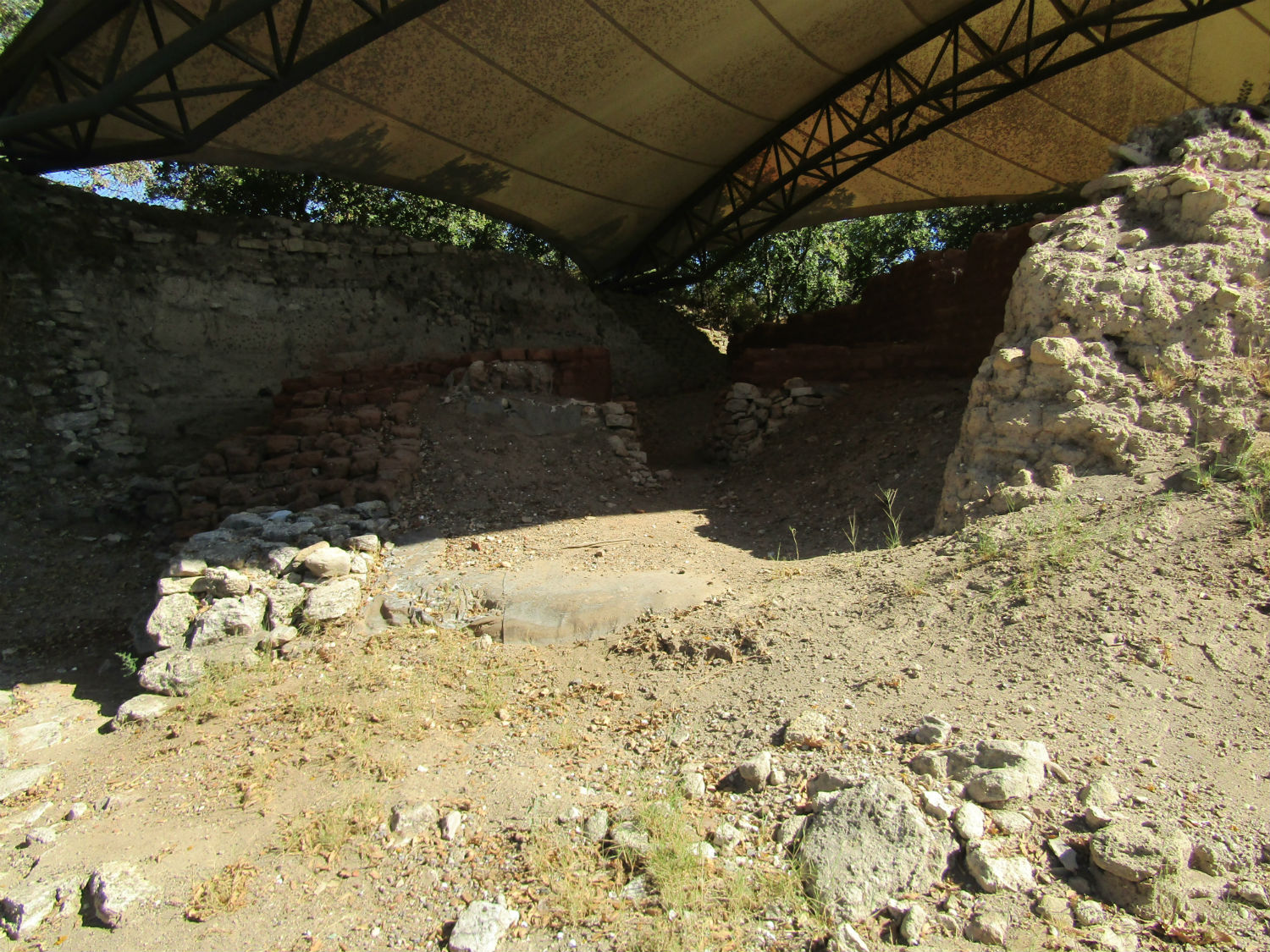 Schliemann Trench (top left). Levels II, III and IV (top centre). Site of the Citidel and Megaron (bottom centre and right) - Troy II/III
Schliemann Trench (top left). Levels II, III and IV (top centre). Site of the Citidel and Megaron (bottom centre and right) - Troy II/III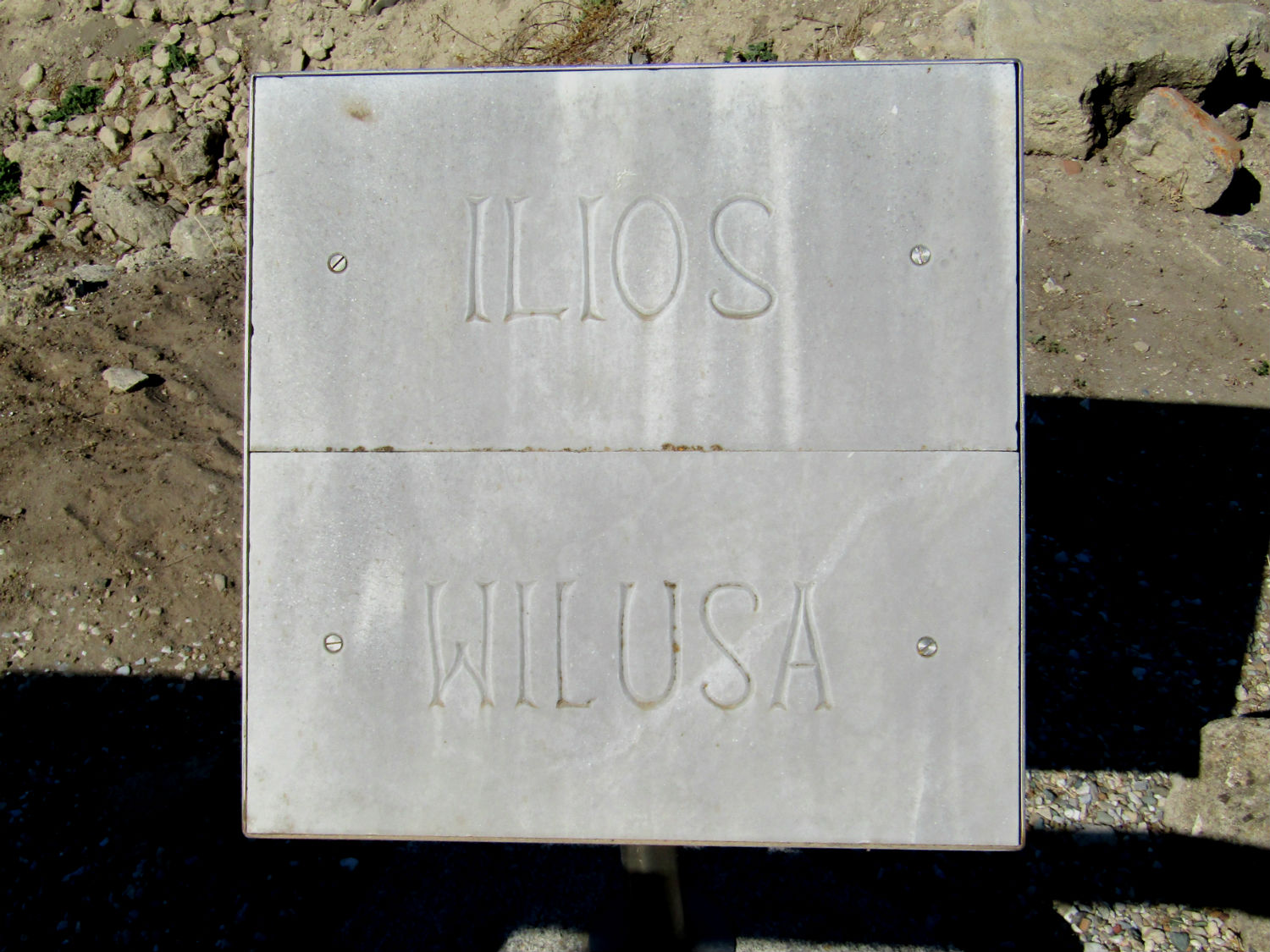
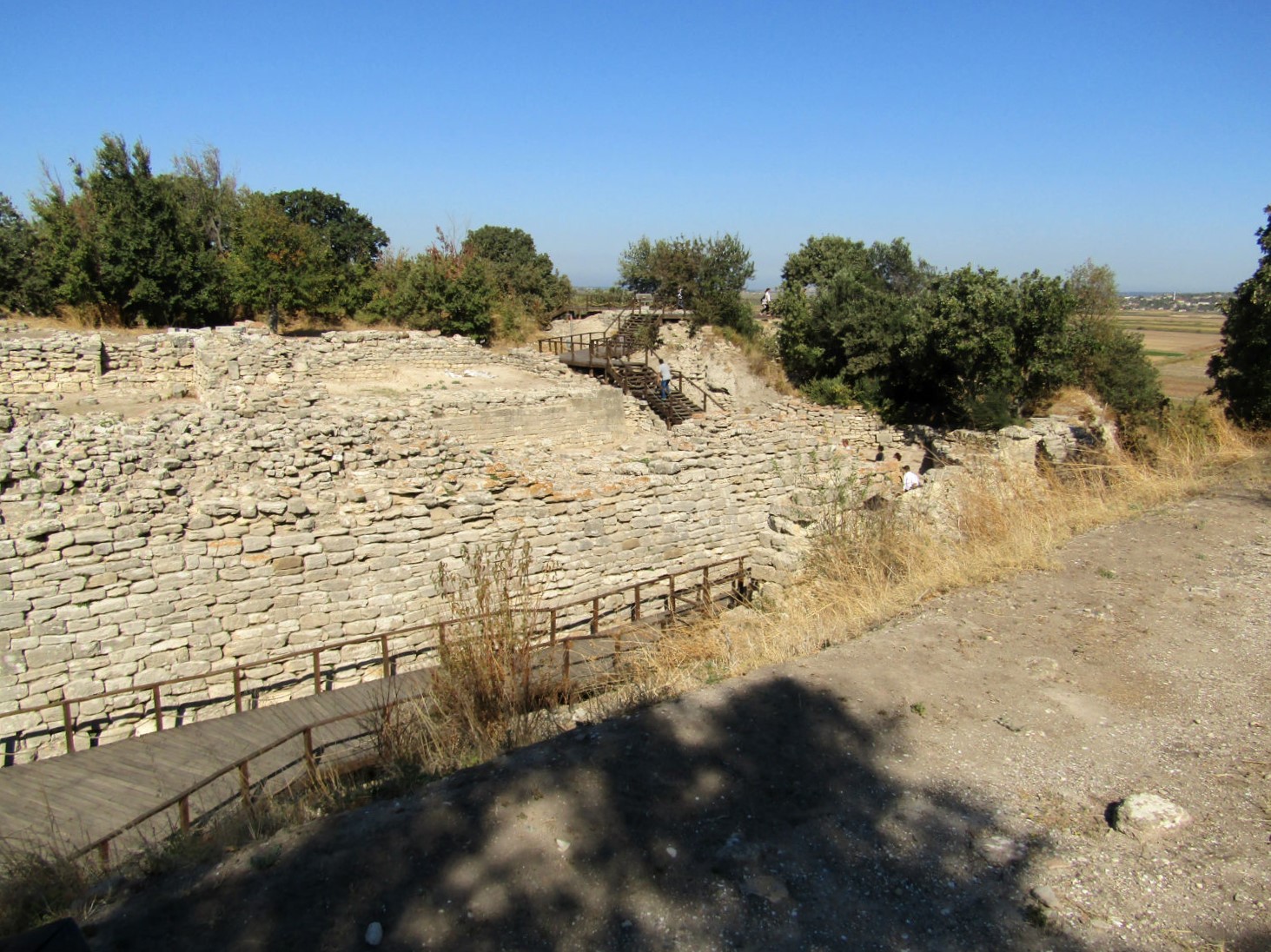

City of Ilios (Greek) or Wilusa (Hittite) during Troy II/III
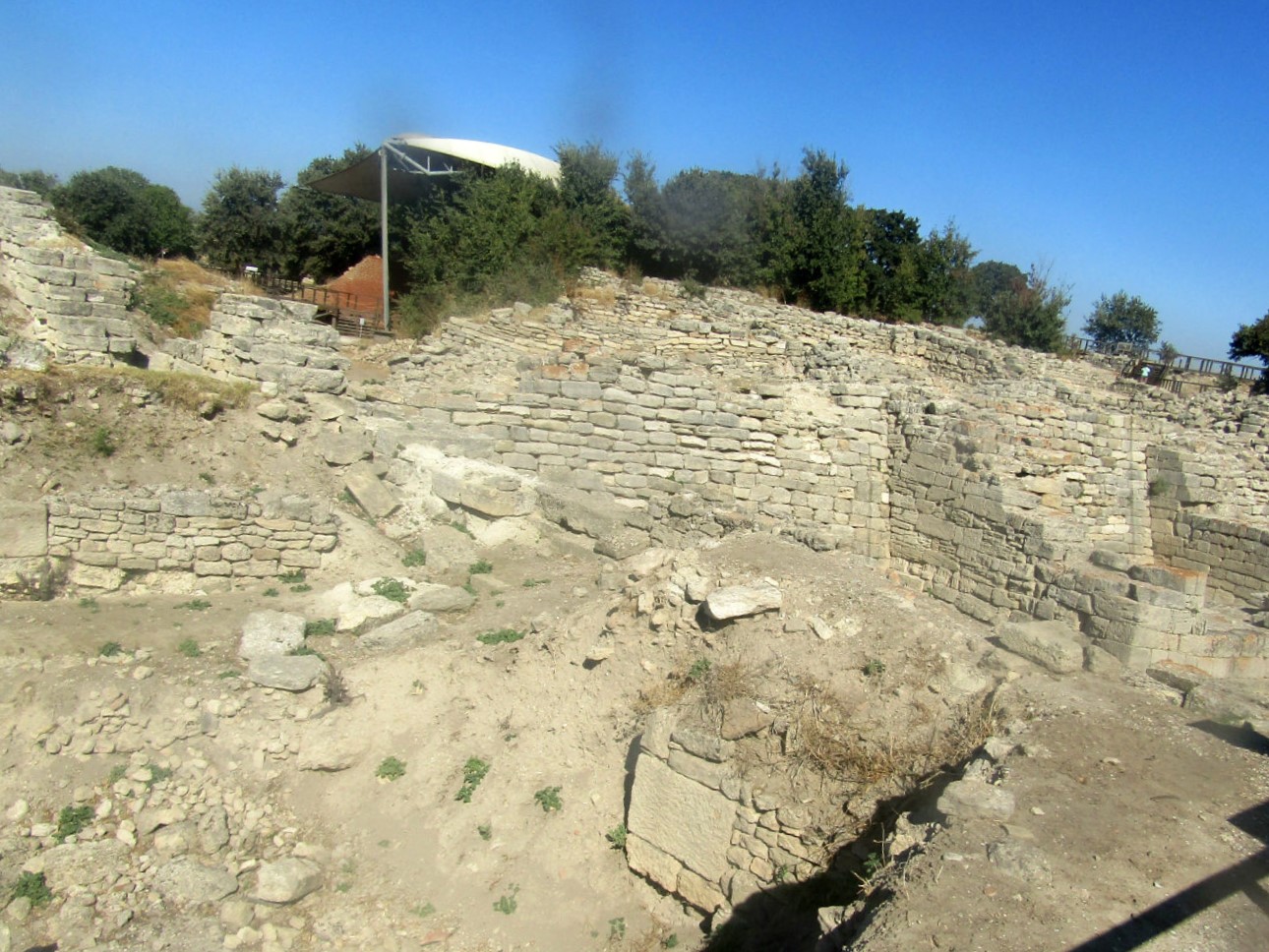
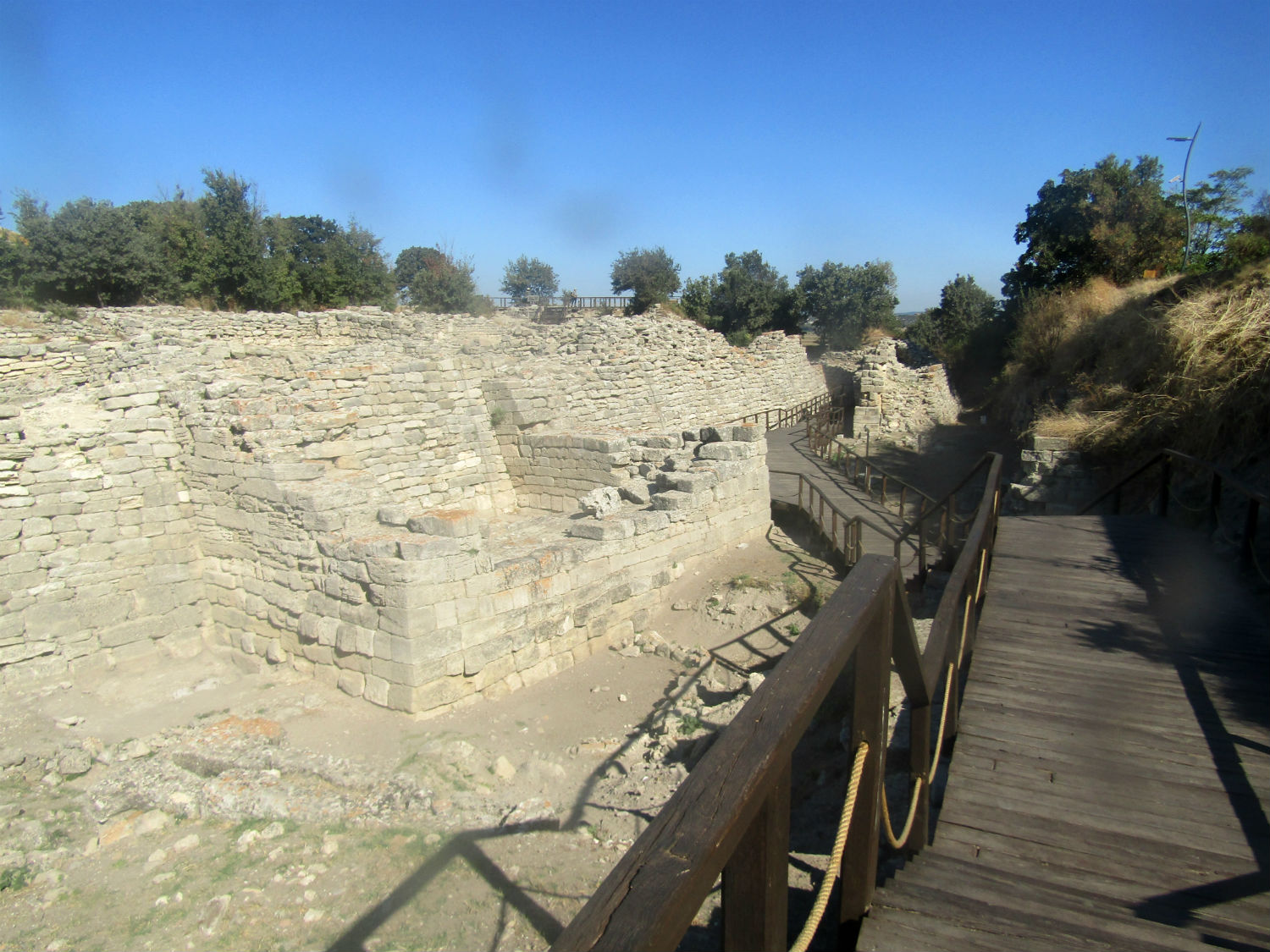
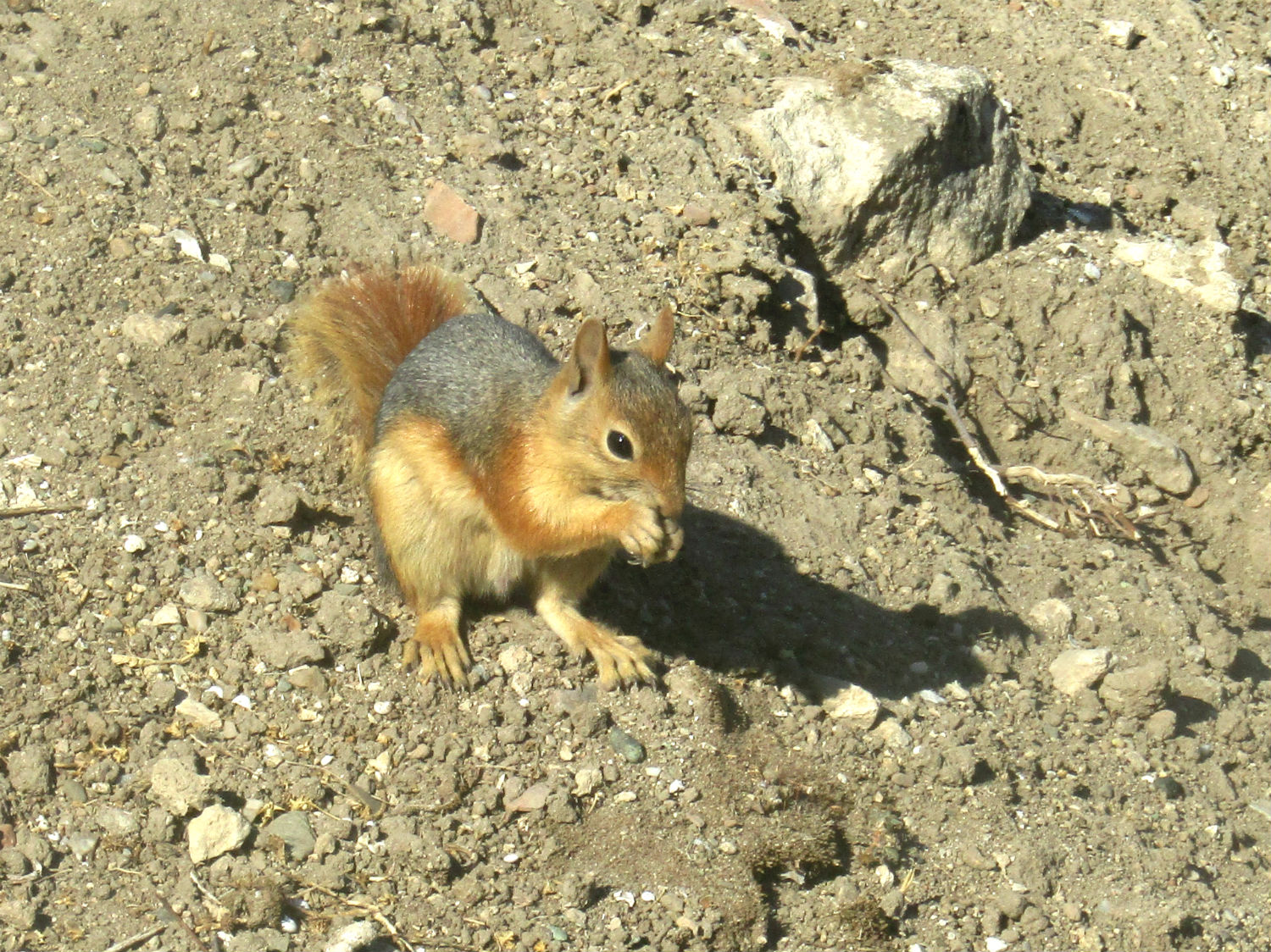
East Wall - Troy VI
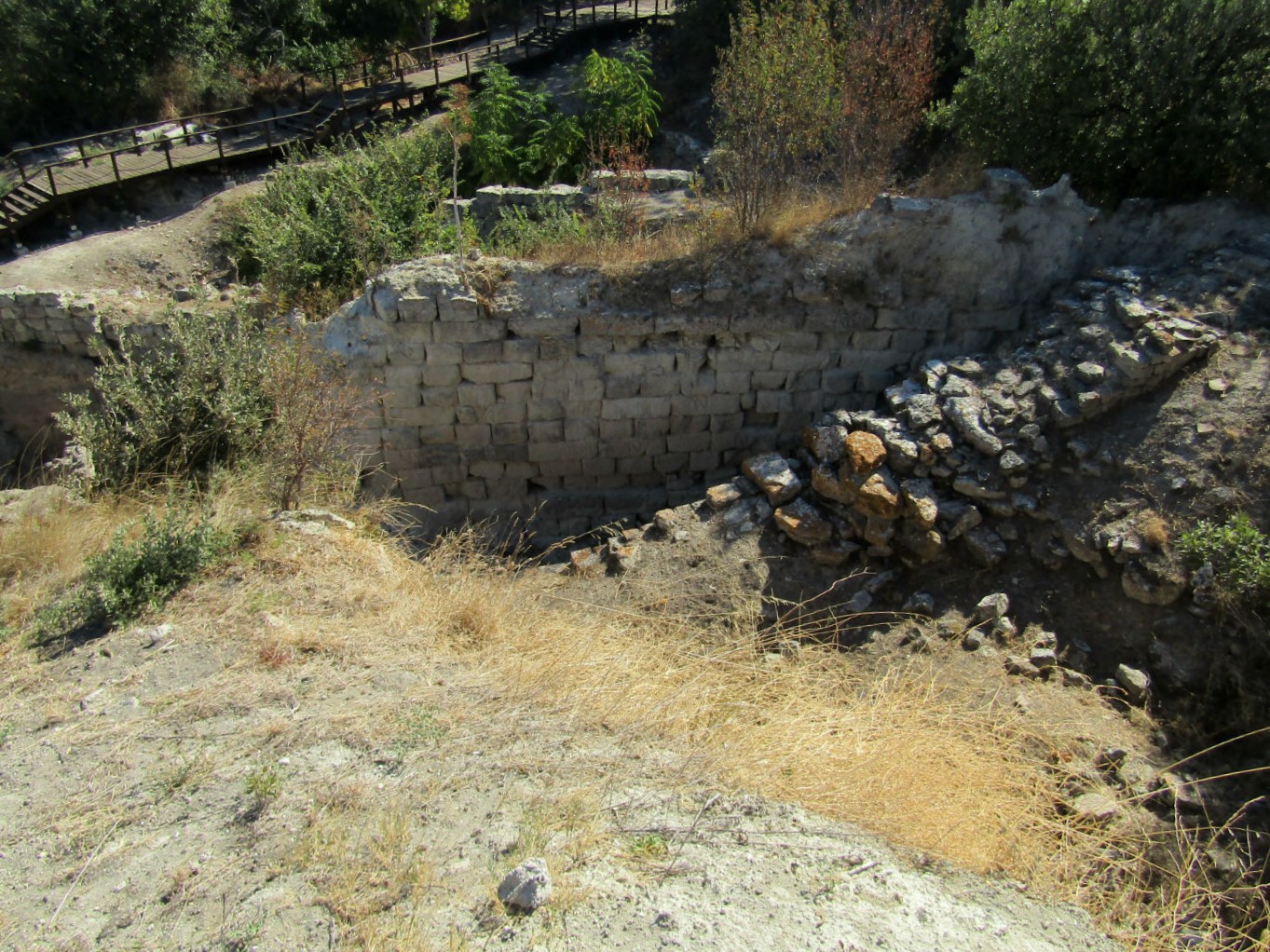

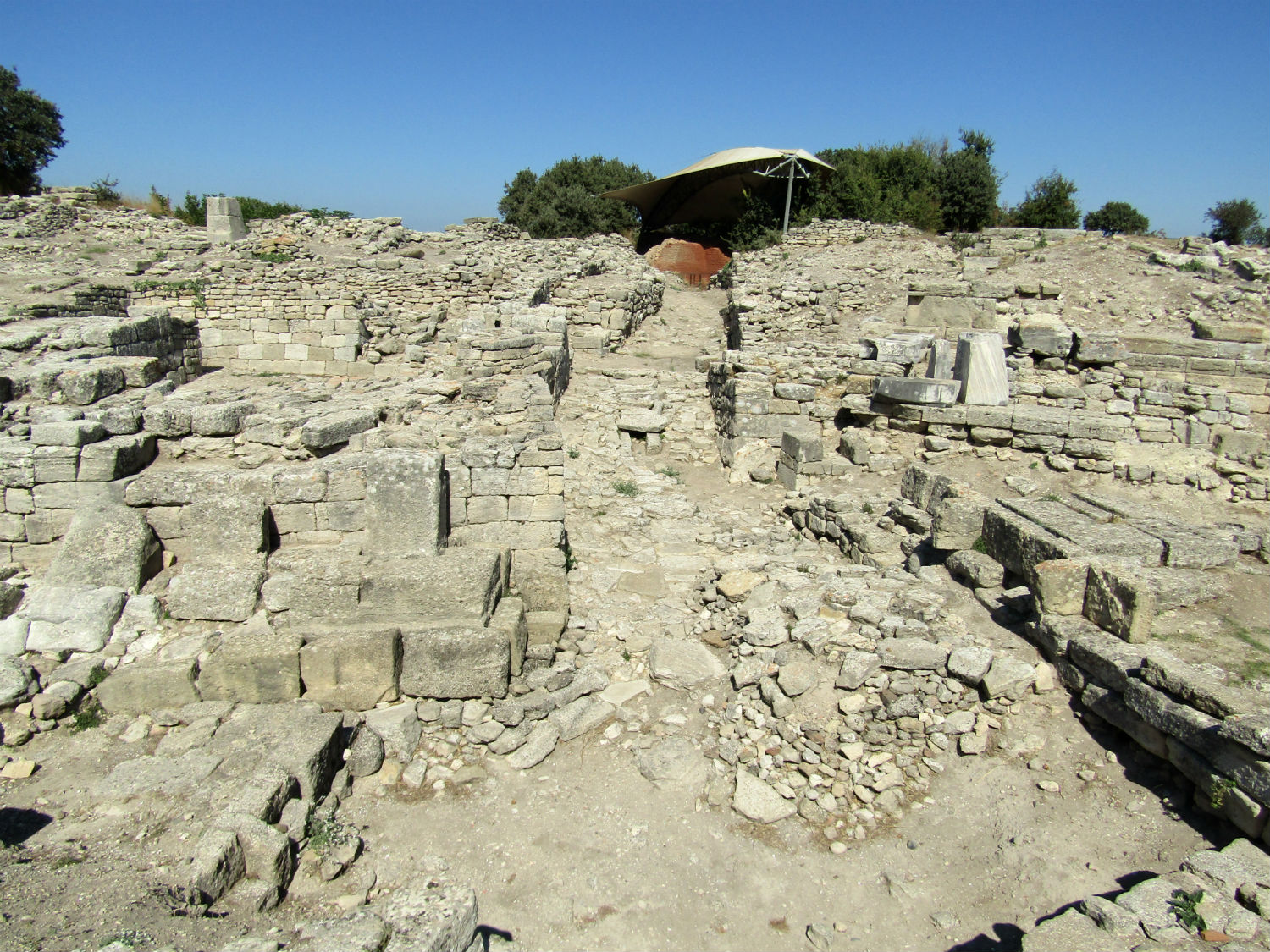
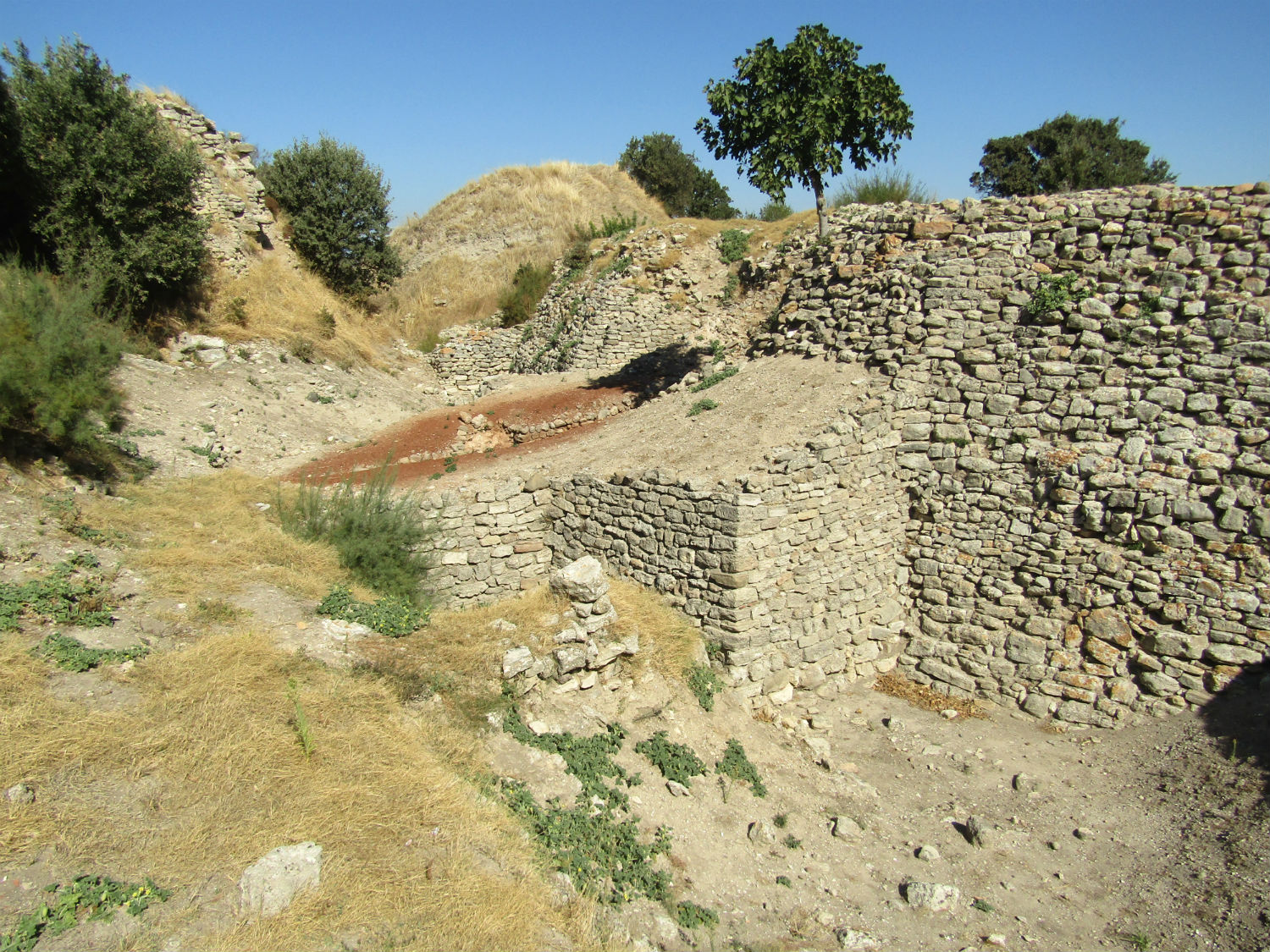

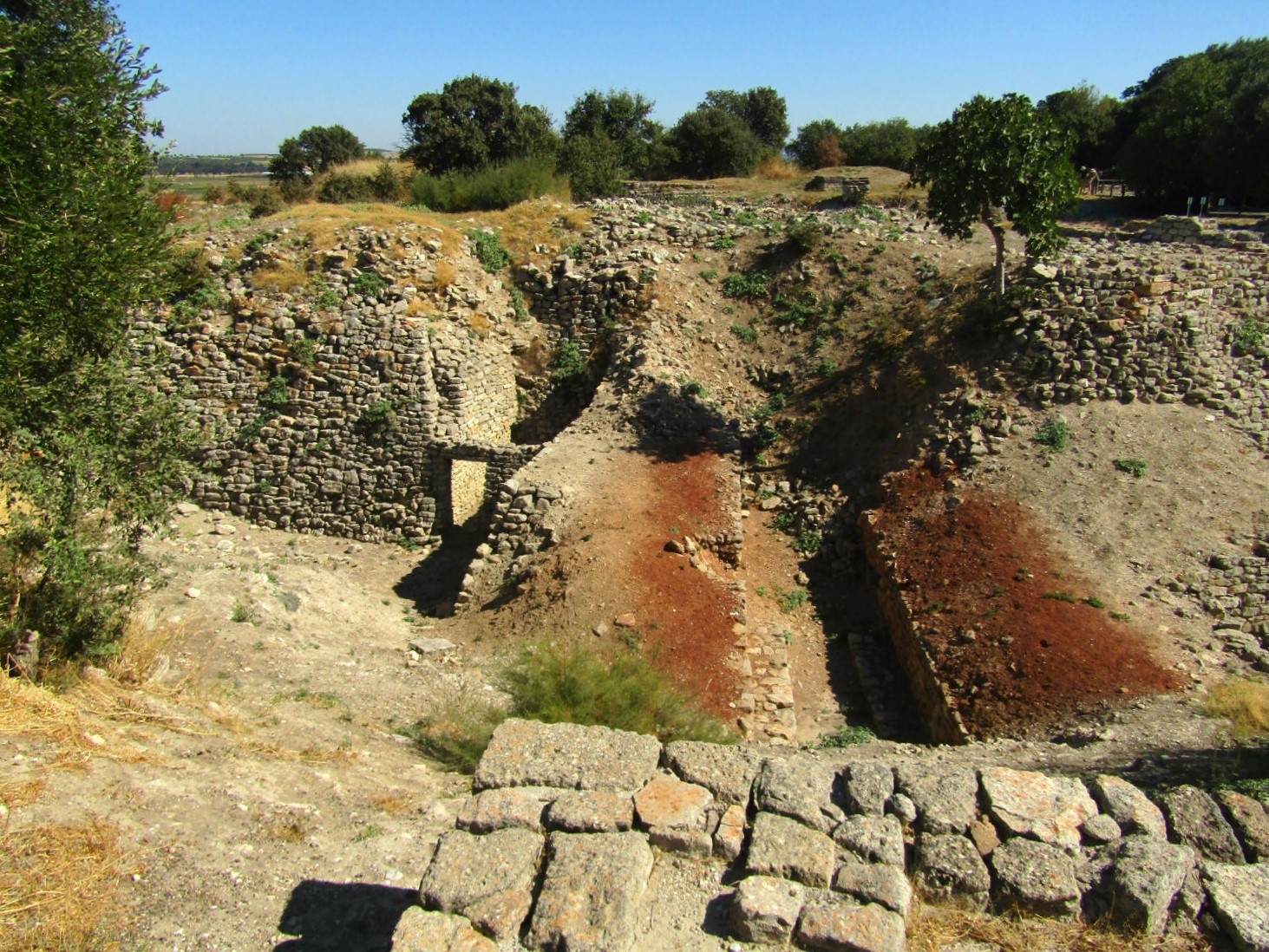 City Wall - Troy III ((top left). Palace House VIM (top centre), Lower City (Ilios) (top right) - Troy VI. City Gate West (bottom row) - Troy VI/VII
City Wall - Troy III ((top left). Palace House VIM (top centre), Lower City (Ilios) (top right) - Troy VI. City Gate West (bottom row) - Troy VI/VII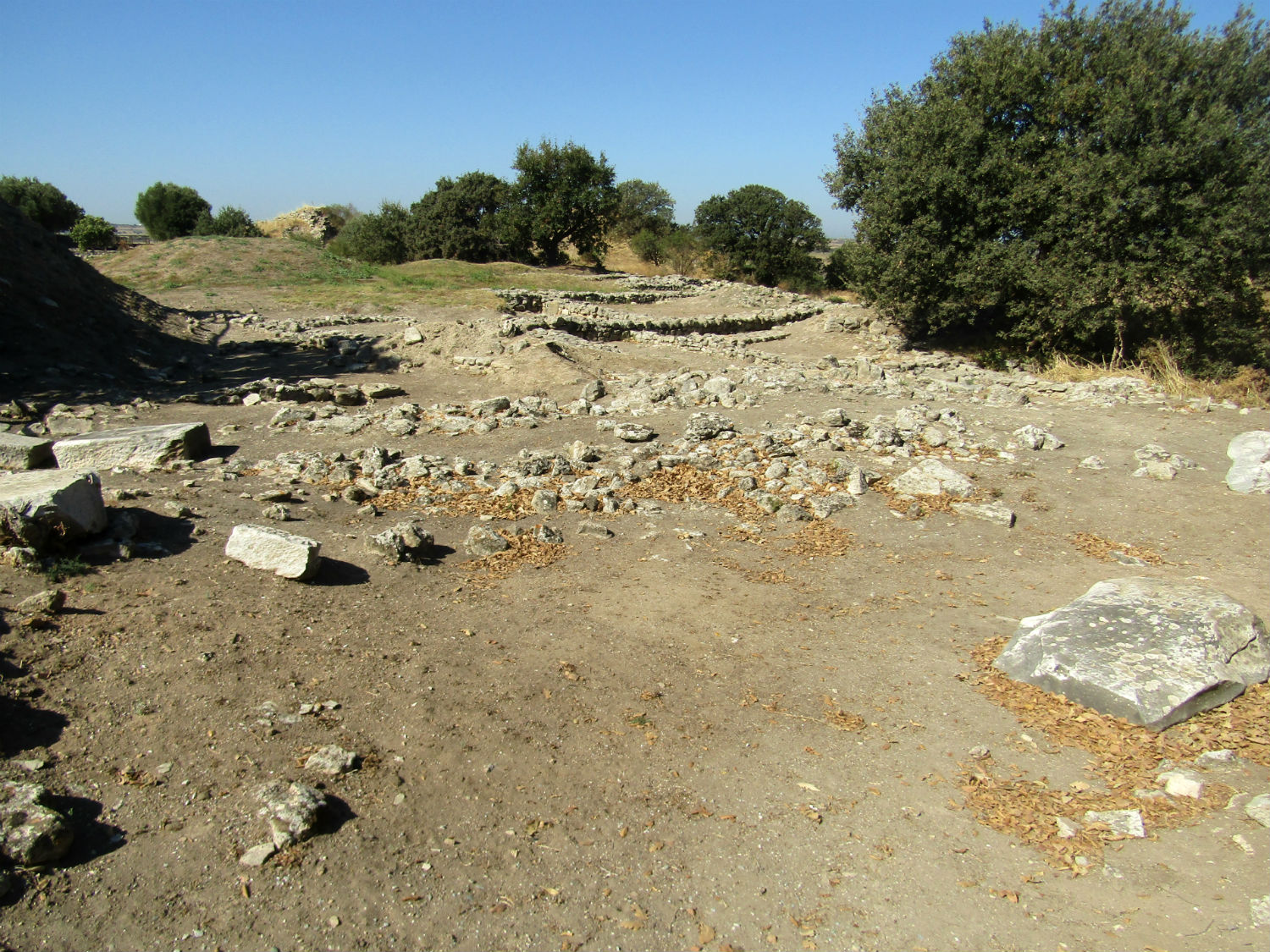

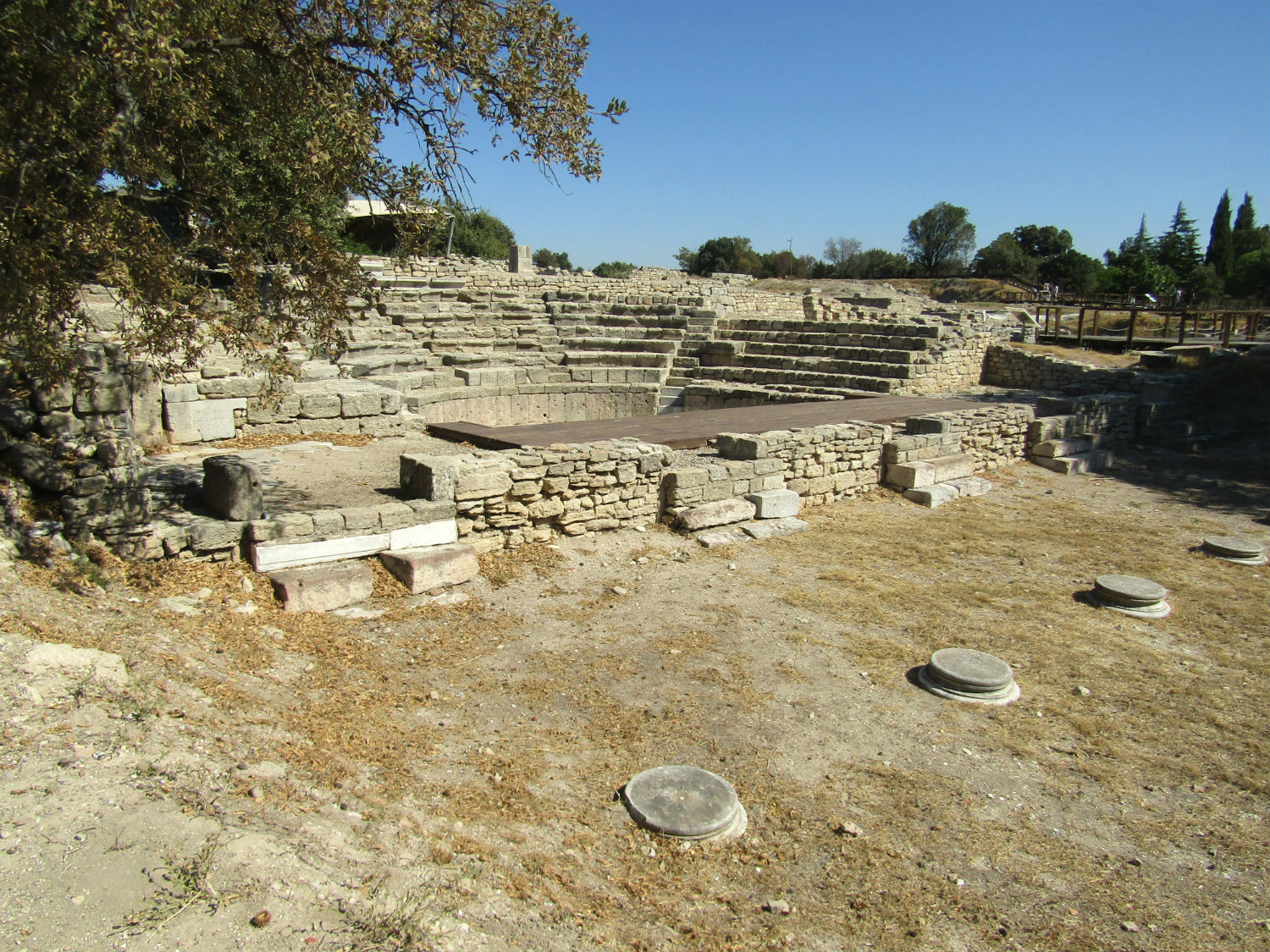
Temple of Athena (left), Sanctuary (centre), Odeion (right) - Troy VIII/IX
A word of caution: The above photographs are from my site visit and the classification of the ruin is the best I can establish from a single visit. I am no expert on this subject so there are bound to be errors and ommisions. However, the intention is only to give an overall view of what can be found at this important but very complicated archaeological site.
According to Wikipedia, Troy was a city in the far northwest of the region known in late Classical antiquity as Asia Minor, now known as Anatolia in modern Turkey, just south of the southwest mouth of the Dardanelles strait and northwest of Mount Ida. The present-day location is known as Hisarlik. It was the setting of the Trojan War described in the Greek Epic Cycle, in particular in the Iliad, one of the two epic poems attributed to Homer. Metrical evidence from the Iliad and the Odyssey suggests that the name (Ilion); this is also supported by the Hittite name for what is thought to be the same city, Wilusa.
A new capital called Ilium (from Greek: Ilion) was founded on the site in the reign of the Roman Emperor Augustus. It flourished until the establishment of Constantinople, became a bishopric and declined gradually in the Byzantine era.
In 1865, English archaeologist Frank Calvert excavated trial trenches in a field he had bought from a local farmer at Hisarlik, and in 1868, Heinrich Schliemann, a wealthy German businessman and archaeologist, also began excavating in the area after a chance meeting with Calvert in Çanakkale. These excavations revealed several cities built in succession. Schliemann was at first skeptical about the identification of Hisarlik with Troy, but was persuaded by Calvert and took over Calvert's excavations on the eastern half of the Hisarlik site, which was on Calvert's property. Troy VII has been identified with the city called Wilusa by the Hittites and is generally (but not conclusively) identified with Homeric Troy.
Today, the hill at Hisarlik has given its name to a small village near the ruins, which supports the tourist trade visiting the Troia archaeological site. It lies within the province of Çanakkale, some 30 km south-west of the provincial capital, also called Çanakkale. The nearest village is Tevfikiye. The map here shows the adapted Scamander estuary with Ilium a little way inland across the Homeric plain. Due to Troy's location near the Aegean Sea, the Sea of Marmara, and the Black Sea, it was a central hub for the military and trade.
Troy was added to the UNESCO World Heritage list in 1998.
A new capital called Ilium (from Greek: Ilion) was founded on the site in the reign of the Roman Emperor Augustus. It flourished until the establishment of Constantinople, became a bishopric and declined gradually in the Byzantine era.
In 1865, English archaeologist Frank Calvert excavated trial trenches in a field he had bought from a local farmer at Hisarlik, and in 1868, Heinrich Schliemann, a wealthy German businessman and archaeologist, also began excavating in the area after a chance meeting with Calvert in Çanakkale. These excavations revealed several cities built in succession. Schliemann was at first skeptical about the identification of Hisarlik with Troy, but was persuaded by Calvert and took over Calvert's excavations on the eastern half of the Hisarlik site, which was on Calvert's property. Troy VII has been identified with the city called Wilusa by the Hittites and is generally (but not conclusively) identified with Homeric Troy.
Today, the hill at Hisarlik has given its name to a small village near the ruins, which supports the tourist trade visiting the Troia archaeological site. It lies within the province of Çanakkale, some 30 km south-west of the provincial capital, also called Çanakkale. The nearest village is Tevfikiye. The map here shows the adapted Scamander estuary with Ilium a little way inland across the Homeric plain. Due to Troy's location near the Aegean Sea, the Sea of Marmara, and the Black Sea, it was a central hub for the military and trade.
Troy was added to the UNESCO World Heritage list in 1998.
As I leave the archaeological site I'm left so impressed by the skills of the various archaeologists over time that have excavated the site and identified the nine levels of occupation spanning 4,000 years. This must surely be one of the most complex sites yet excavated and there's probabaly many discoveries yet to come. Here at this site from a jumble of walls and passages, they've cultured the imagination of visitors and connected with the Classical period of the ancient civilisations in the Troad.
Arkeoloji Müzesi (Çanakkale Archaeoligical Museum)……..At lunchtime our attention turns to the Troy Museum but where is it? We are told it is 700 metres back along the approach road. Quite why we make such a ‘pigs ear’ of finding it I’m not sure but a large brown cube shaped building we passed on the way to the archaeological site looks more industrial than a museum. It should have been more clearly signposted. However, more of a distraction, we locate the Çanakkale Archaeoligical Museum inside the town of Tevfikiye: Not too much to see inside this building now as it appears that the new Troy Museum has taken over its collection of exhibits. However the ground outside contains busts on pedistals representing Greek Gods and mortals, including Alexander and Helen, of course, from the classical Trojan War.
Arkeoloji Müzesi (Çanakkale Archaeoligical Museum)……..At lunchtime our attention turns to the Troy Museum but where is it? We are told it is 700 metres back along the approach road. Quite why we make such a ‘pigs ear’ of finding it I’m not sure but a large brown cube shaped building we passed on the way to the archaeological site looks more industrial than a museum. It should have been more clearly signposted. However, more of a distraction, we locate the Çanakkale Archaeoligical Museum inside the town of Tevfikiye: Not too much to see inside this building now as it appears that the new Troy Museum has taken over its collection of exhibits. However the ground outside contains busts on pedistals representing Greek Gods and mortals, including Alexander and Helen, of course, from the classical Trojan War.
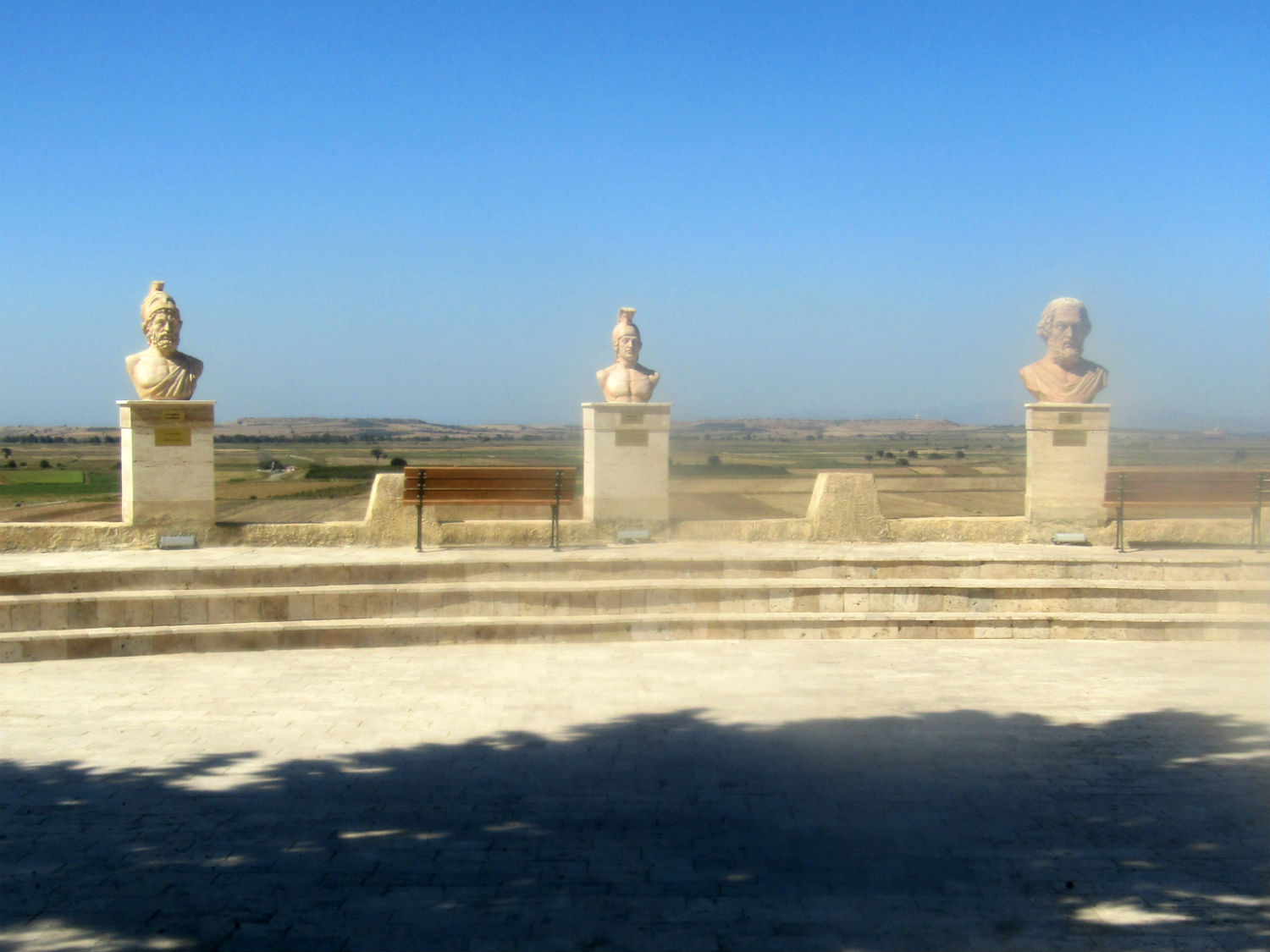
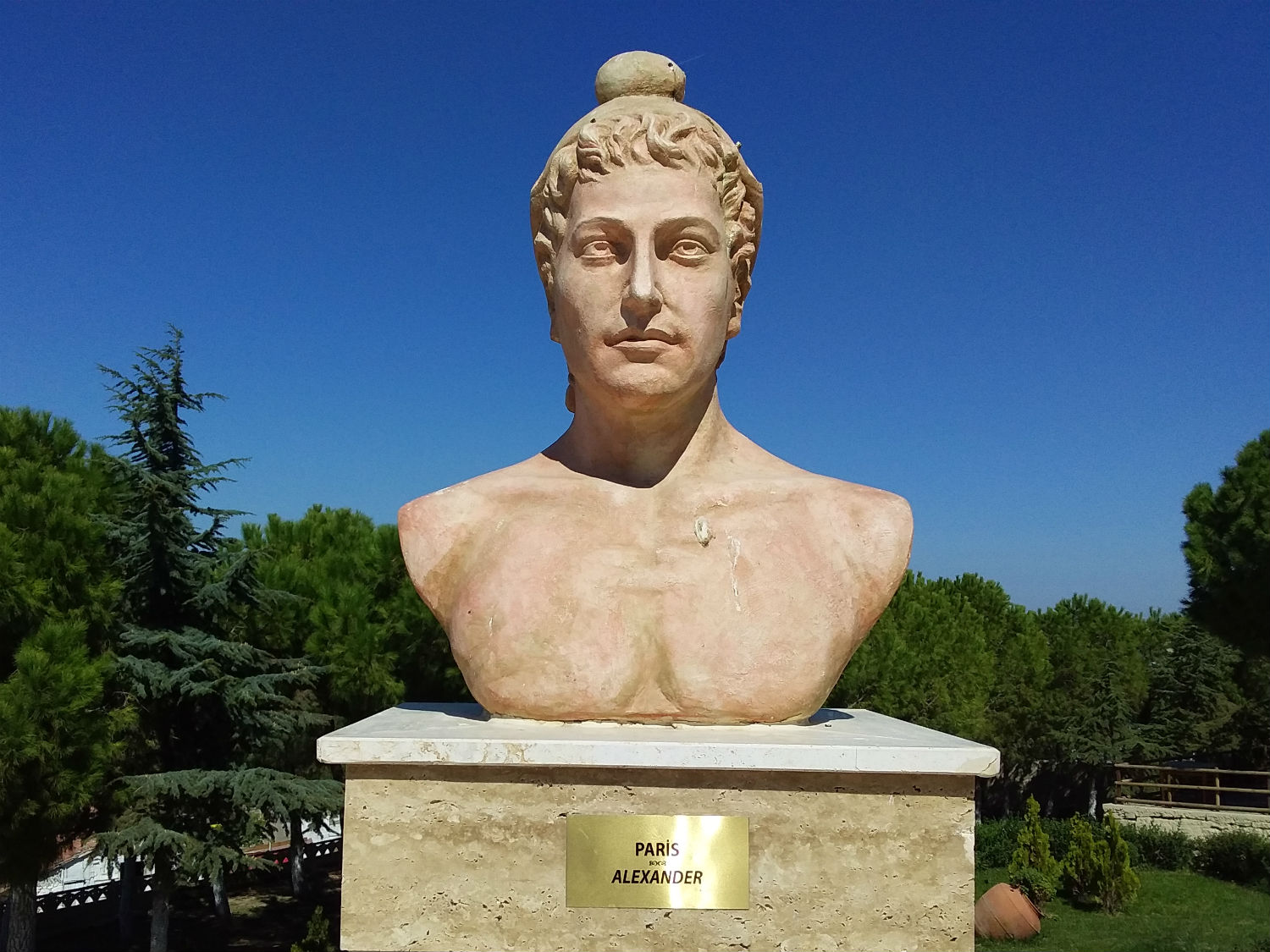
 Arkeoloji Müzesi (Çanakkale Archaeoligical Museum), Tevfikiye, Çanakkale Merkez, Çanakkale Province
Arkeoloji Müzesi (Çanakkale Archaeoligical Museum), Tevfikiye, Çanakkale Merkez, Çanakkale Province
Museum of Troy……..
Once inside, the scale of the Troy Museum becomes clear and the level of investment made, substantial. The museum on five floors concentrates on the archaeology of the Troad with Troy at its heart. The museum contains a wealth of important artefacts from the first known occupation around 5,500 years ago. It’s not to be missed. Inevitably you need to spend a lot of time here. This is added to, due to the fact the lift not working at the time of our visit. What is remarkable, is the sheer volume and quality of the exhibits here. Understandably the exhibits relate to the period of occupation of Troy (also known as Hisarlic). It appears that the city was finally abandoned around 500 AD.
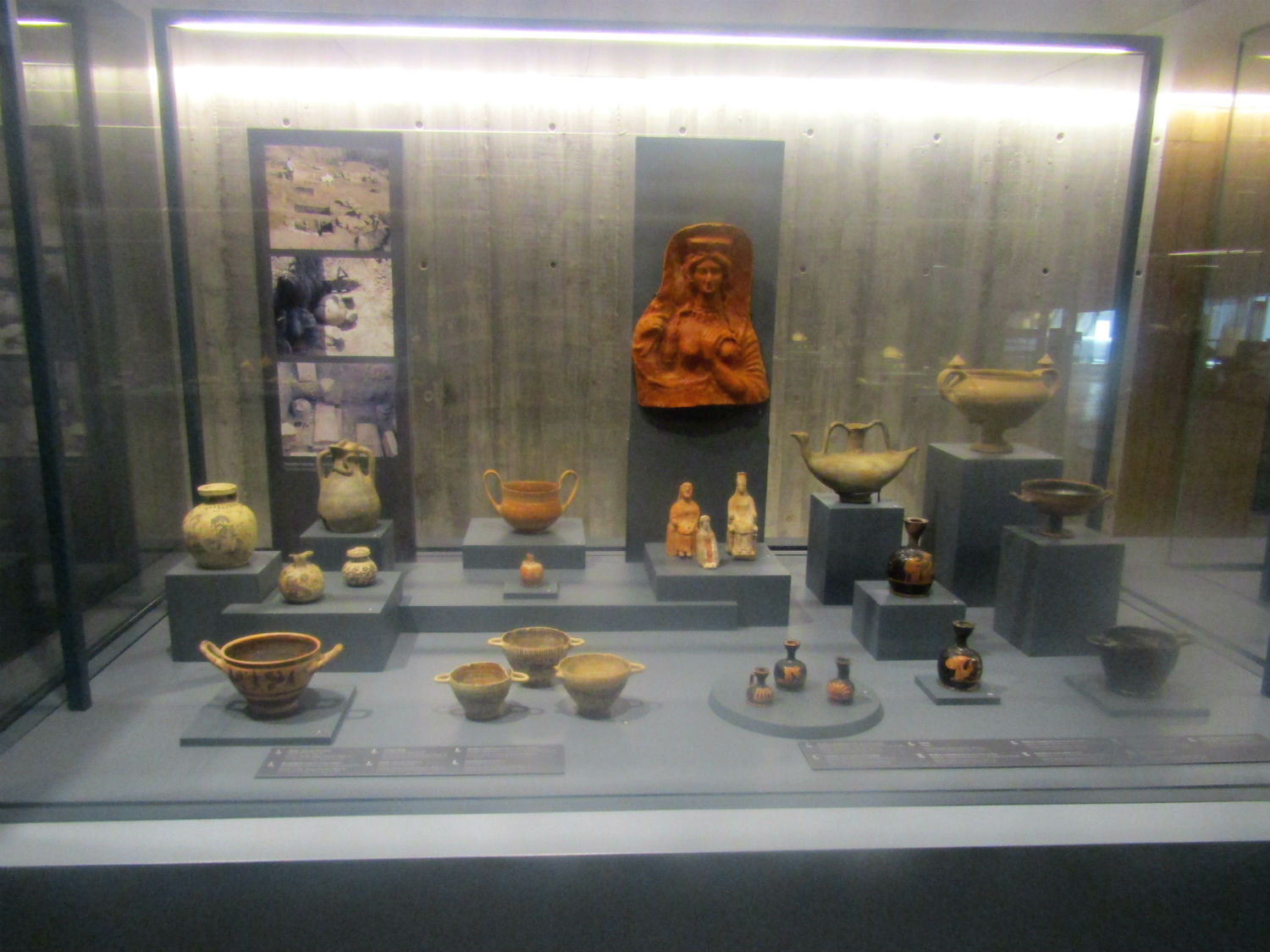
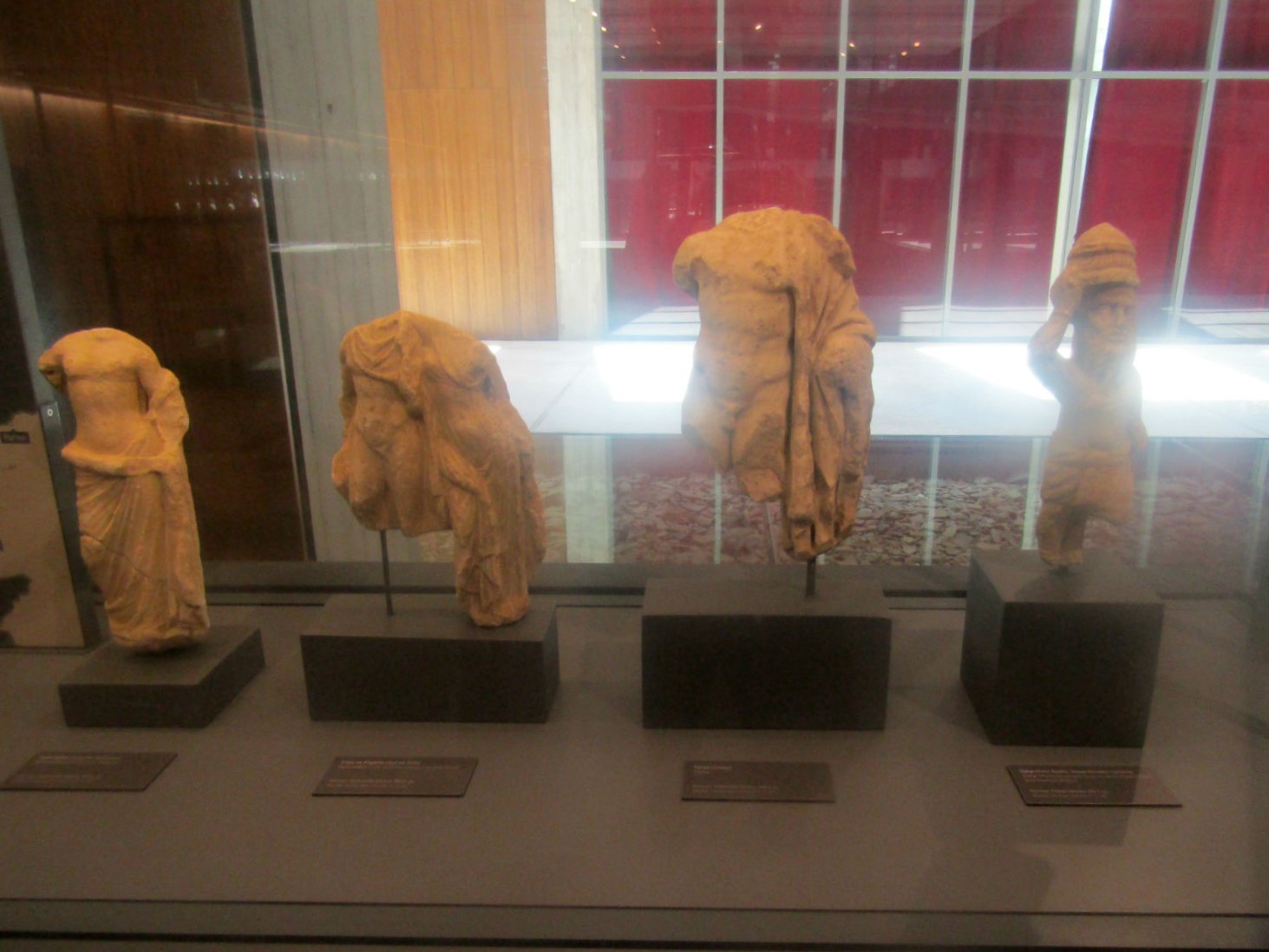
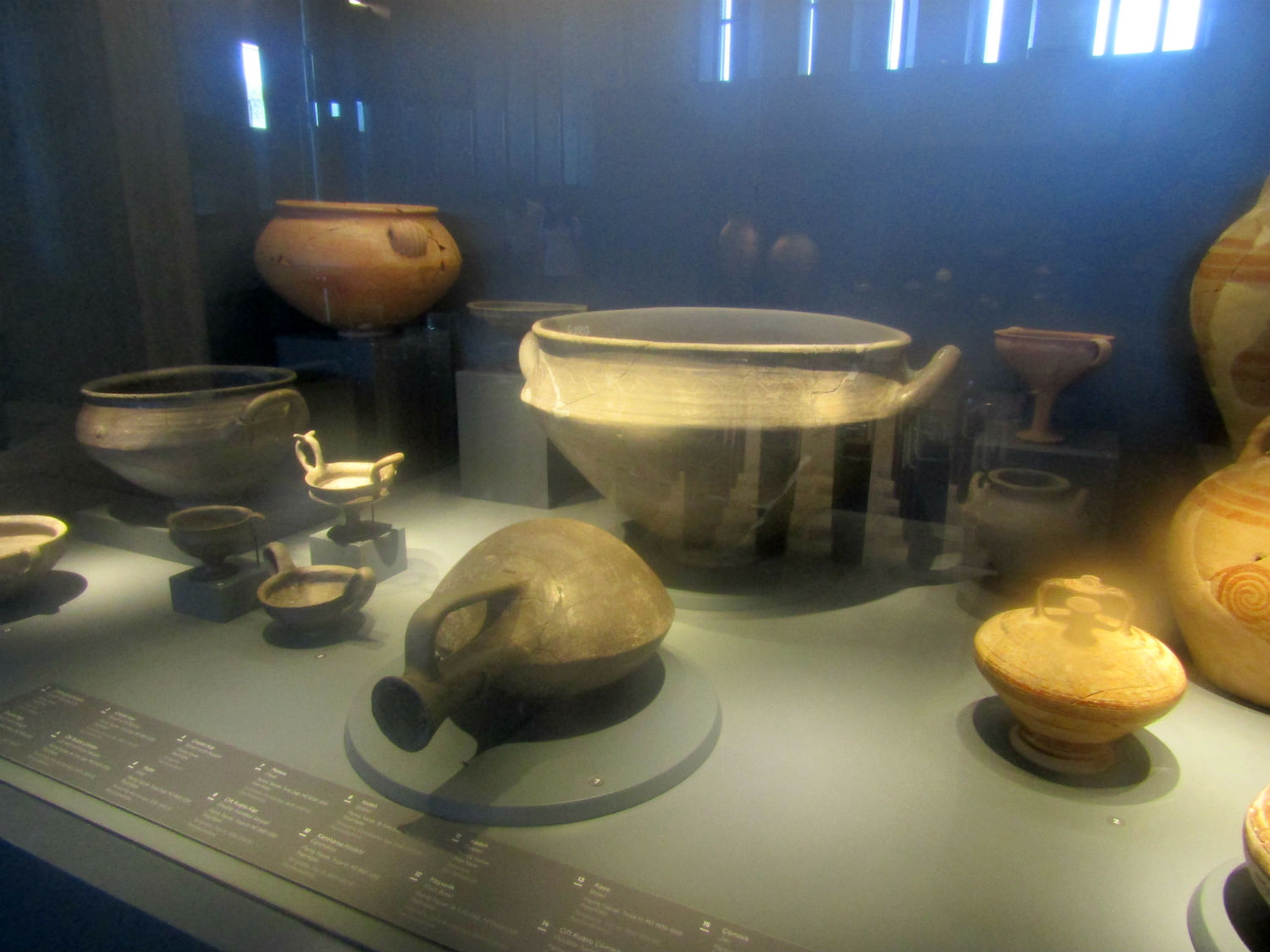

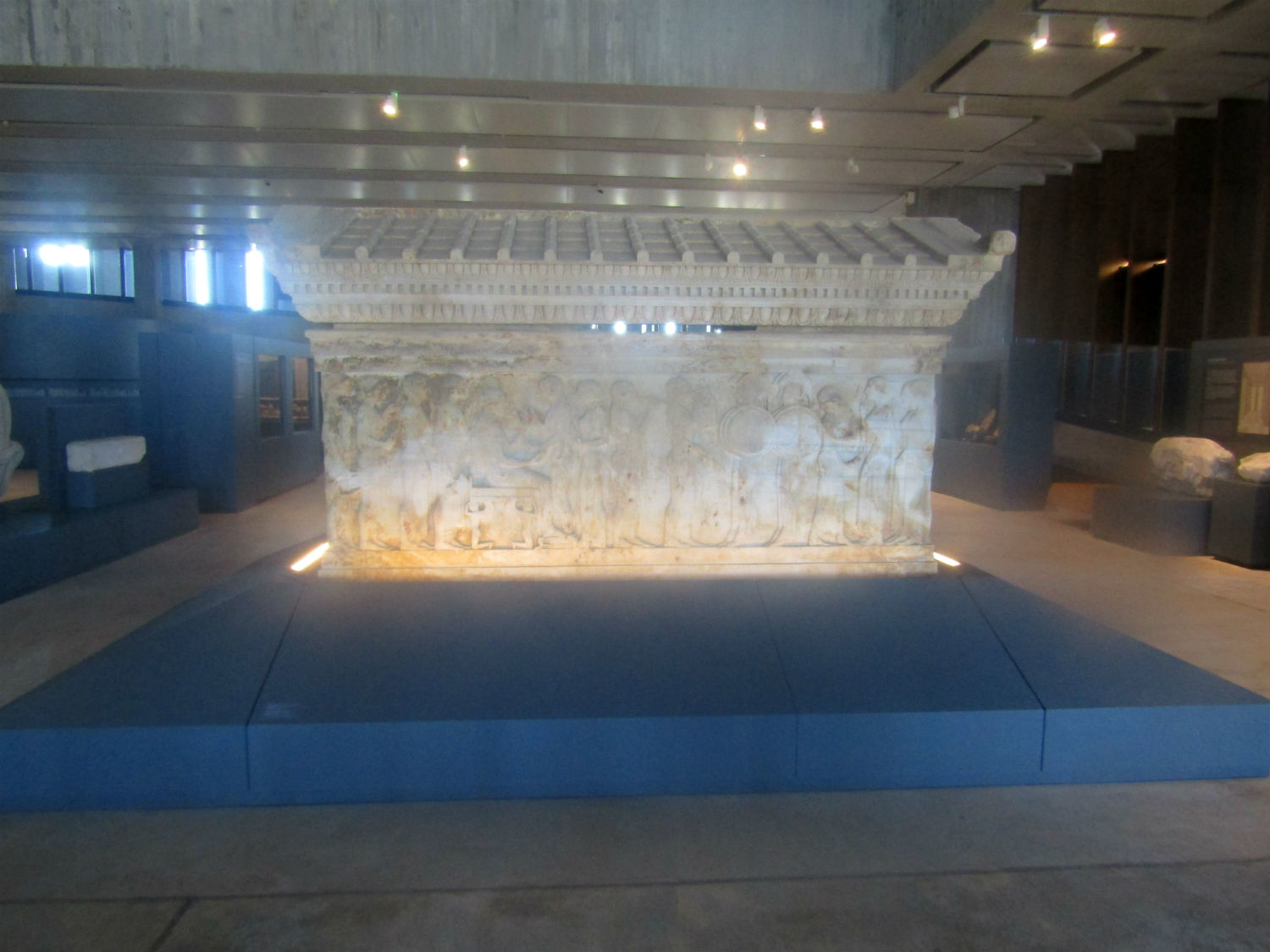
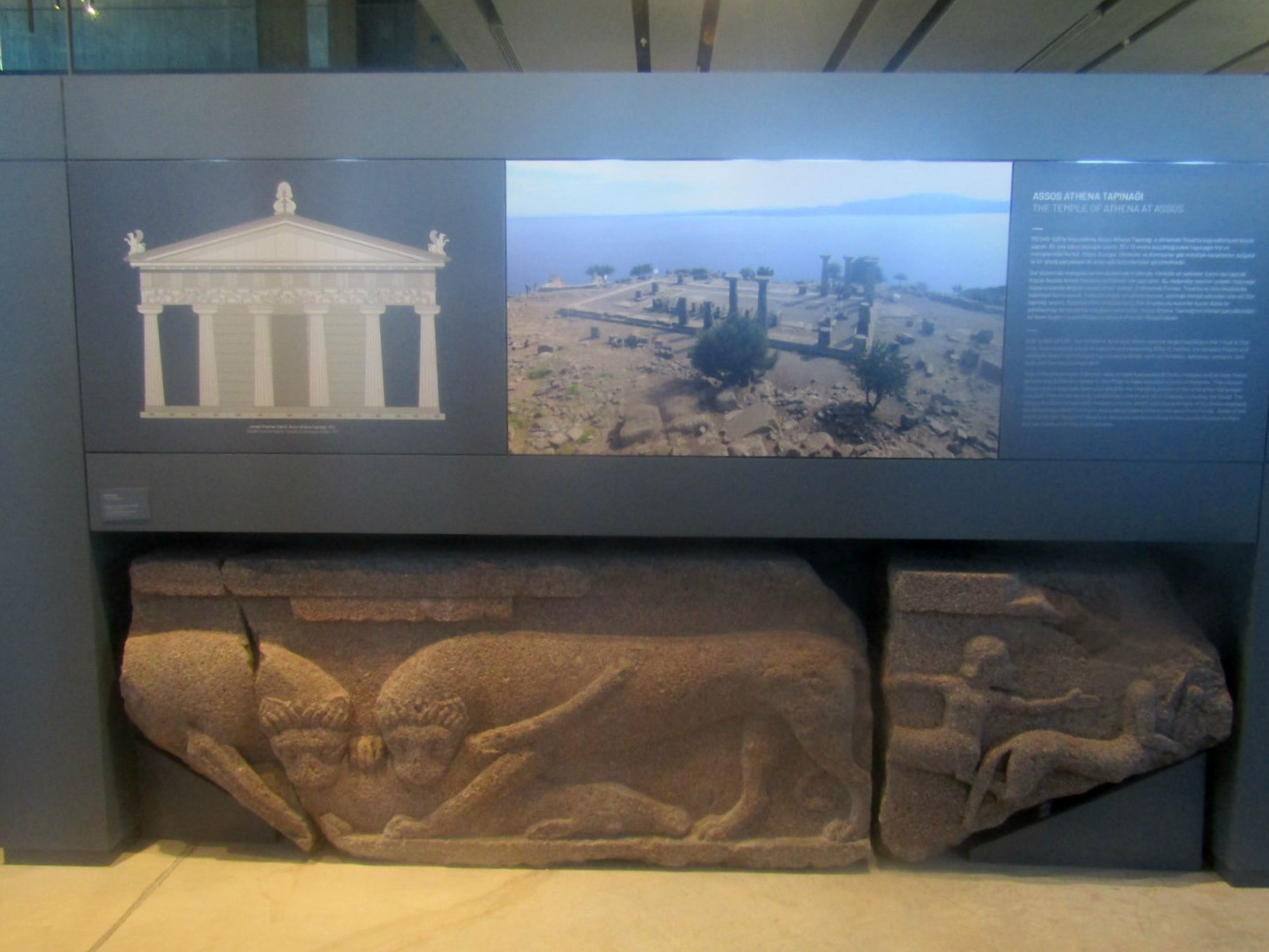 Troya Müzesi ( Museum of Troy), Tevfikiye, Çanakkale Merkez, Çanakkale Province
Troya Müzesi ( Museum of Troy), Tevfikiye, Çanakkale Merkez, Çanakkale Province
The Troy Museum is an archaeological museum located close to the presumed archaeological site of the ancient Greek city of Troy, in northwestern Turkey. Opened in 2018, it exhibits in seven sections of a contemporary architectural building the historical artefacts from Troy and some other ancient cities around and on nearby islands. The museum director is Ali Atmaca.
Museum Building
Troy Museum is situated about 800 m (2,600 ft) east of the archaeological site of the city of Troy at Tevfikiye village, in the Edine district in Çanakkale Province, northwestern Turkey. The design contest for the museum building was won by Yalın Mimarlık in 2011. Mimarlık designed the building in a contemporary plain architectural style. Construction began in 2013, came to a stop in 2015, and resumed again in 2017.
The cube-shaped building with four floors on a square plan is clad in rust-coloured weathering steel to give the impression that it was excavated from the archaeological site. The building's height is equivalent to the depth of the excavation at the archaeological site of Troy. The exhibition areas cover 2,700 m2 (29,000 sq ft) of the total 12,750 m2 (137,200 sq ft) indoor area. The exhibition areas of 32 m × 32 m (105 ft × 105 ft) are enclosed by workplaces, storages, and conference rooms. The basement is reserved for service functions. Entrance to the museum is by a 12 m (39 ft)-wide ramp leading to an underground gate.
The total cost of the building came to 45 million (approx. $8 million). The museum was opened on 10 October 2018, the "Year of Troy" as declared in Turkey. Exhibitions
The niches on the walls of the entrance ramp contain gravestones, large-sized statues, scenes and mural-sized photographs from the various levels of the excavation in Troy. At the entrance, information about the archaeological science, archaeological dating methods and terms like the conservation and restoration of cultural heritage, tumulus and the prehistoric periods of the Neolithic, Chalcolithic, Bronze Age and Iron Age are explained to the visitor for orientation purposes. The museum also features visual graphical designs, dioramas and interactive displays.
The museum contains seven sections. The ground floor is reserved for artefacts from the Troad region, today Biga Peninsula. These are archaeological remains from the ancient cities of Assos (Behramkale), Tenedos (Bozcaada), Parium, Alexandria Troas (Eski Stambul), Smintheion, Lampsacus (near Lapseki), Thymbra, Tavolia and Imbros (Gökçeada). On display are about 2,000 pieces from the museum's collection of around 40,000 diverse artefacts, which were transferred from the Çanakkale Archaeological Museum, İstanbul Archaeology Museums and the Museum of Anatolian Civilizations. Transfer of Troy coins from the İzmir Archaeological Museum was requested. The exhibits include tear catchers, glass and terracotta perfume bottles, figurines, gold pieces, necklaces and bracelets, coins, ornaments, bone objects and tools, metal containers, terracotta potteries, weapons, axes and cutters, millstones, inscriptions, altars, sarcophagi, sculptures and many other special pieces from the area's 5,000-year old history. Among the notable pieces are the 1994-excavated Polyxena sarcophagus and the 2012-discovered statue of the Greek god Triton. Stone artefacts, columns, steles, and column capitals are exhibited in the museum yard.
Museum Building
Troy Museum is situated about 800 m (2,600 ft) east of the archaeological site of the city of Troy at Tevfikiye village, in the Edine district in Çanakkale Province, northwestern Turkey. The design contest for the museum building was won by Yalın Mimarlık in 2011. Mimarlık designed the building in a contemporary plain architectural style. Construction began in 2013, came to a stop in 2015, and resumed again in 2017.
The cube-shaped building with four floors on a square plan is clad in rust-coloured weathering steel to give the impression that it was excavated from the archaeological site. The building's height is equivalent to the depth of the excavation at the archaeological site of Troy. The exhibition areas cover 2,700 m2 (29,000 sq ft) of the total 12,750 m2 (137,200 sq ft) indoor area. The exhibition areas of 32 m × 32 m (105 ft × 105 ft) are enclosed by workplaces, storages, and conference rooms. The basement is reserved for service functions. Entrance to the museum is by a 12 m (39 ft)-wide ramp leading to an underground gate.
The total cost of the building came to 45 million (approx. $8 million). The museum was opened on 10 October 2018, the "Year of Troy" as declared in Turkey. Exhibitions
The niches on the walls of the entrance ramp contain gravestones, large-sized statues, scenes and mural-sized photographs from the various levels of the excavation in Troy. At the entrance, information about the archaeological science, archaeological dating methods and terms like the conservation and restoration of cultural heritage, tumulus and the prehistoric periods of the Neolithic, Chalcolithic, Bronze Age and Iron Age are explained to the visitor for orientation purposes. The museum also features visual graphical designs, dioramas and interactive displays.
The museum contains seven sections. The ground floor is reserved for artefacts from the Troad region, today Biga Peninsula. These are archaeological remains from the ancient cities of Assos (Behramkale), Tenedos (Bozcaada), Parium, Alexandria Troas (Eski Stambul), Smintheion, Lampsacus (near Lapseki), Thymbra, Tavolia and Imbros (Gökçeada). On display are about 2,000 pieces from the museum's collection of around 40,000 diverse artefacts, which were transferred from the Çanakkale Archaeological Museum, İstanbul Archaeology Museums and the Museum of Anatolian Civilizations. Transfer of Troy coins from the İzmir Archaeological Museum was requested. The exhibits include tear catchers, glass and terracotta perfume bottles, figurines, gold pieces, necklaces and bracelets, coins, ornaments, bone objects and tools, metal containers, terracotta potteries, weapons, axes and cutters, millstones, inscriptions, altars, sarcophagi, sculptures and many other special pieces from the area's 5,000-year old history. Among the notable pieces are the 1994-excavated Polyxena sarcophagus and the 2012-discovered statue of the Greek god Triton. Stone artefacts, columns, steles, and column capitals are exhibited in the museum yard.
A check on the time reveals that we will probably have to take the 4 pm ferry crossing back to Eceabat now which is much later than I expected.
Kilitbahir…….. The options for ferry crossings to the Gallipoli Peninsula from Çanakkale include Kilitbahir as well as Eceabat and we don’t mind which we take. Arriving well before 4 pm we queue for the Kilitbahir, a shorter crossing than back to Eceabat. This brings our arrival to 4 pm which has saved some time. We can now spend a little more time at the Namazgah Bastion, the fortifications that proved so critical during the naval advance in the Dardanelles in March 1915. The town itself contains cafes and restaurants geared up for the tourists who flock here. In Kilitbahir is an impressive mediaeval castle. Built in the 15th century by the Ottomans to prevent hostile ships entering the Dardanelles, it performed exactly the same function as the Namazgah Bastion centuries later.
Feeling the effects of a lot of walking around today I’ll give the castle a miss but achieve excellent photos of the ramparts and towers.
Kilitbahir…….. The options for ferry crossings to the Gallipoli Peninsula from Çanakkale include Kilitbahir as well as Eceabat and we don’t mind which we take. Arriving well before 4 pm we queue for the Kilitbahir, a shorter crossing than back to Eceabat. This brings our arrival to 4 pm which has saved some time. We can now spend a little more time at the Namazgah Bastion, the fortifications that proved so critical during the naval advance in the Dardanelles in March 1915. The town itself contains cafes and restaurants geared up for the tourists who flock here. In Kilitbahir is an impressive mediaeval castle. Built in the 15th century by the Ottomans to prevent hostile ships entering the Dardanelles, it performed exactly the same function as the Namazgah Bastion centuries later.
Feeling the effects of a lot of walking around today I’ll give the castle a miss but achieve excellent photos of the ramparts and towers.
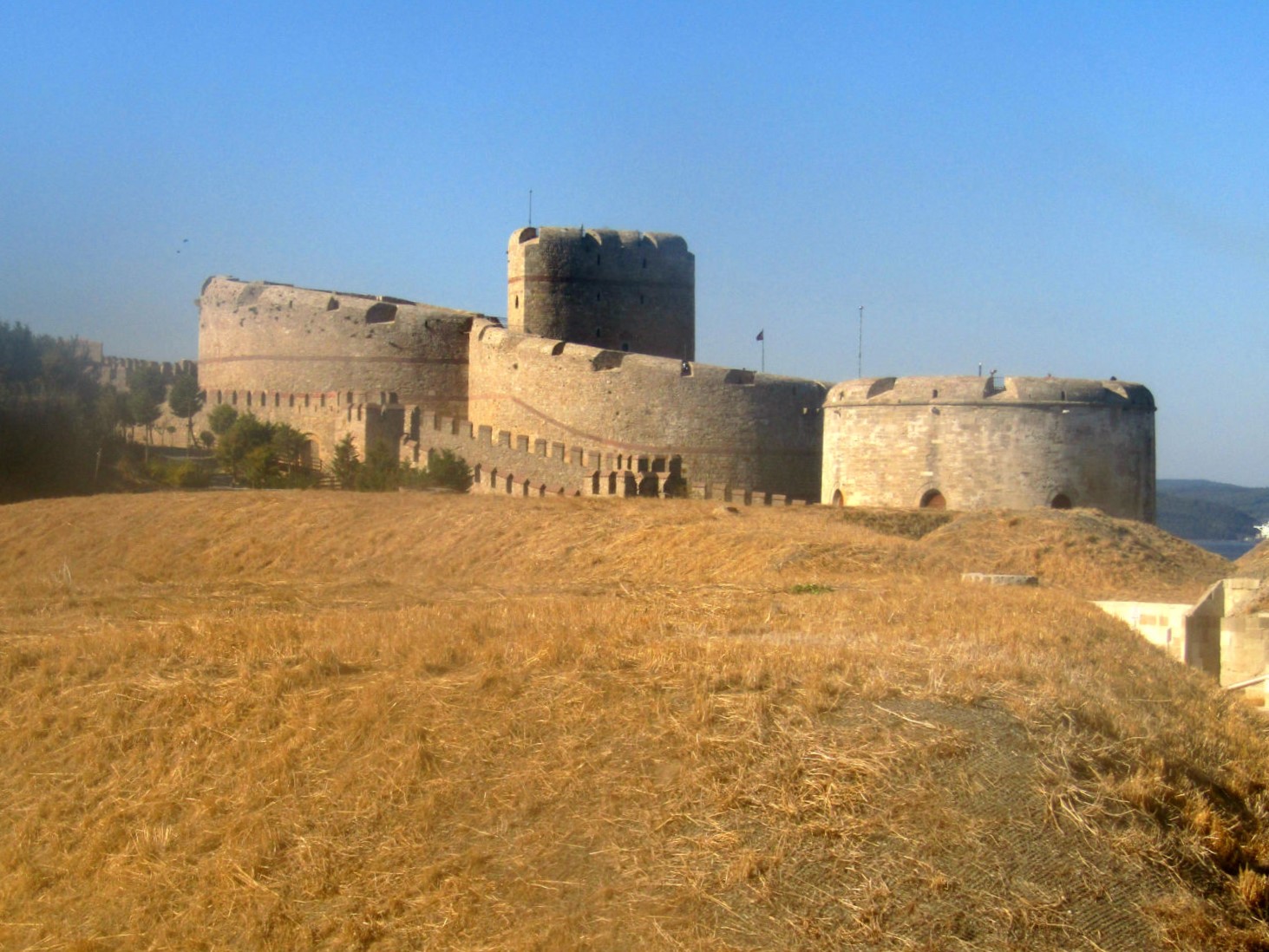
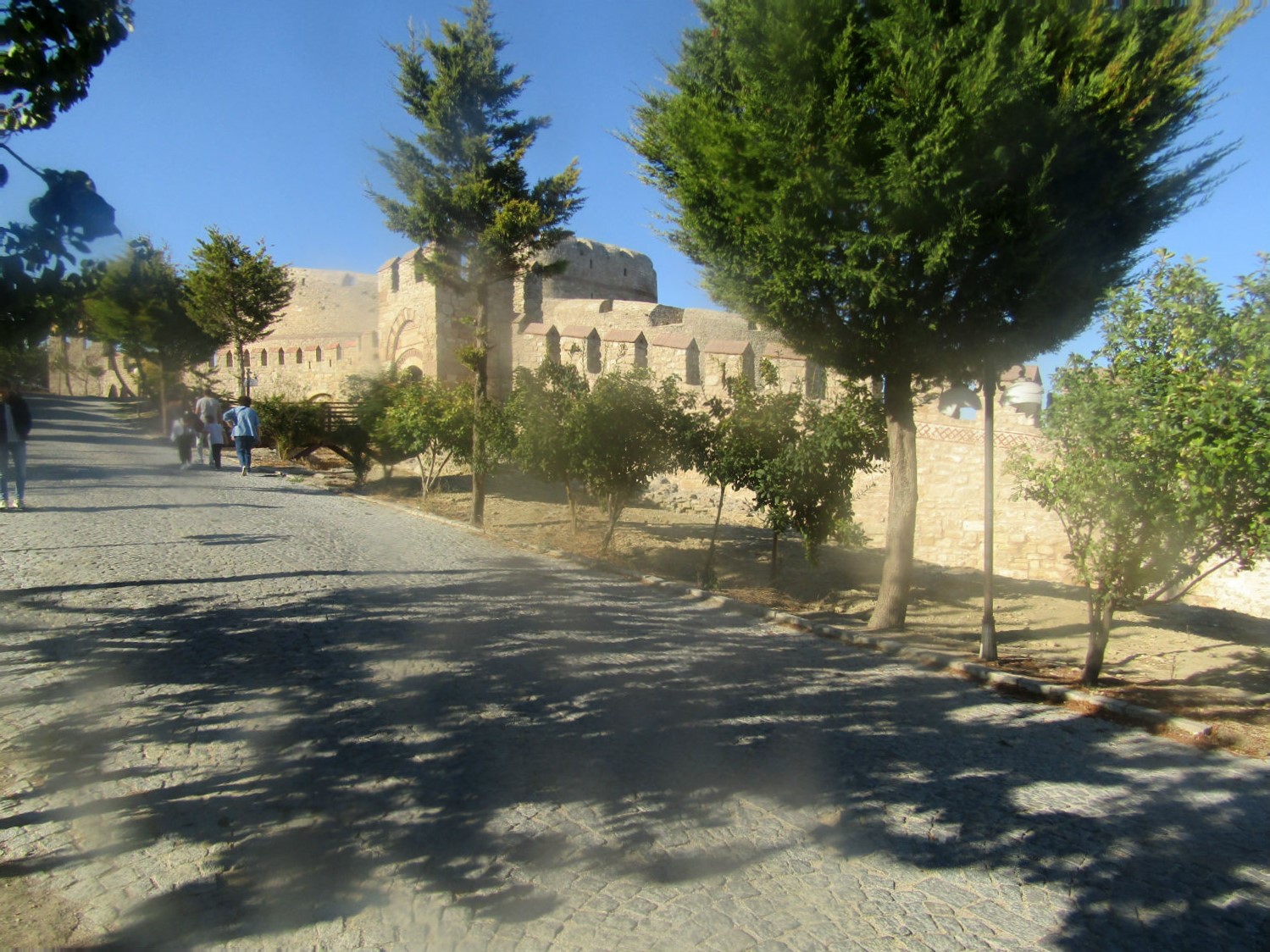
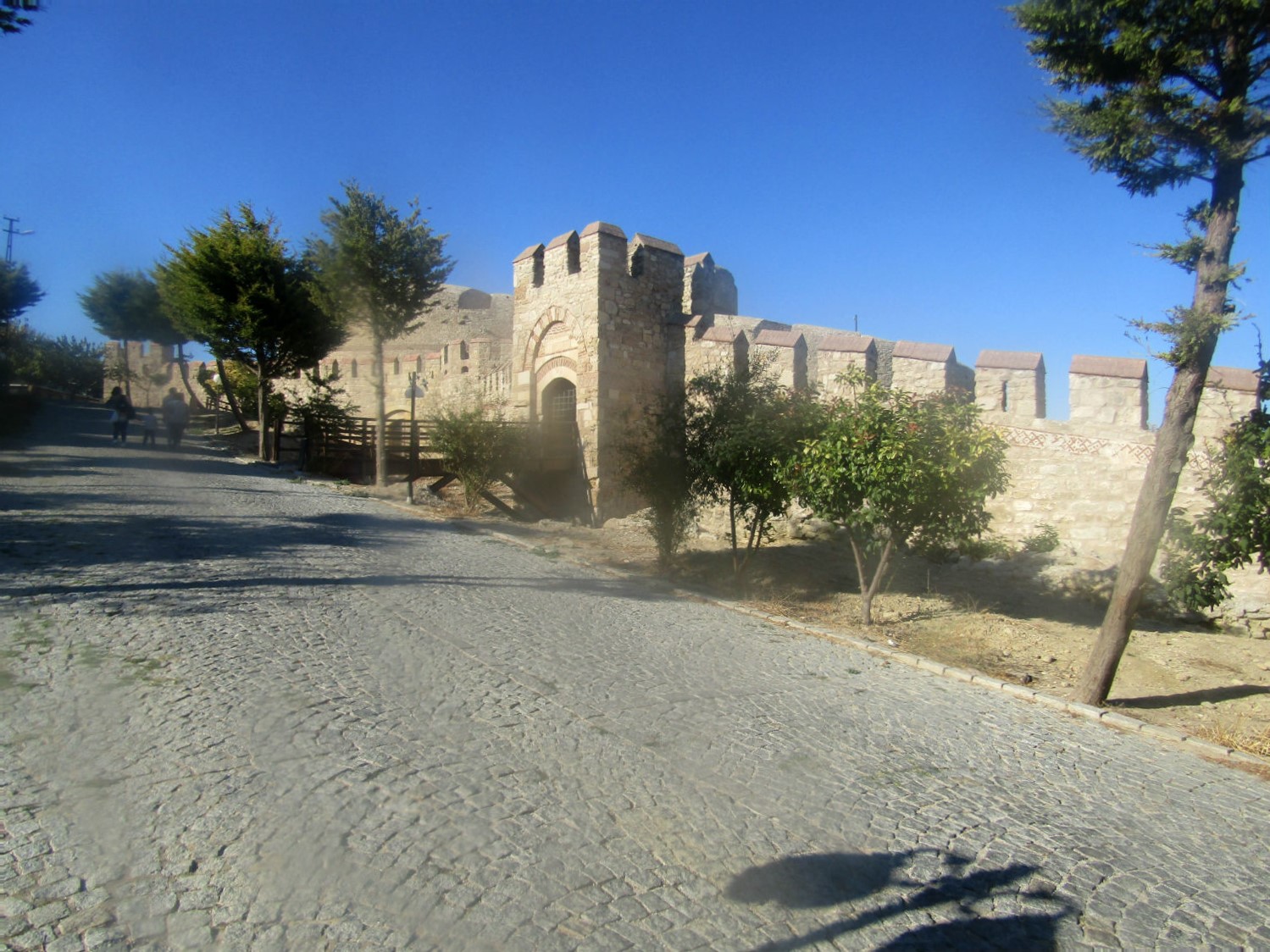
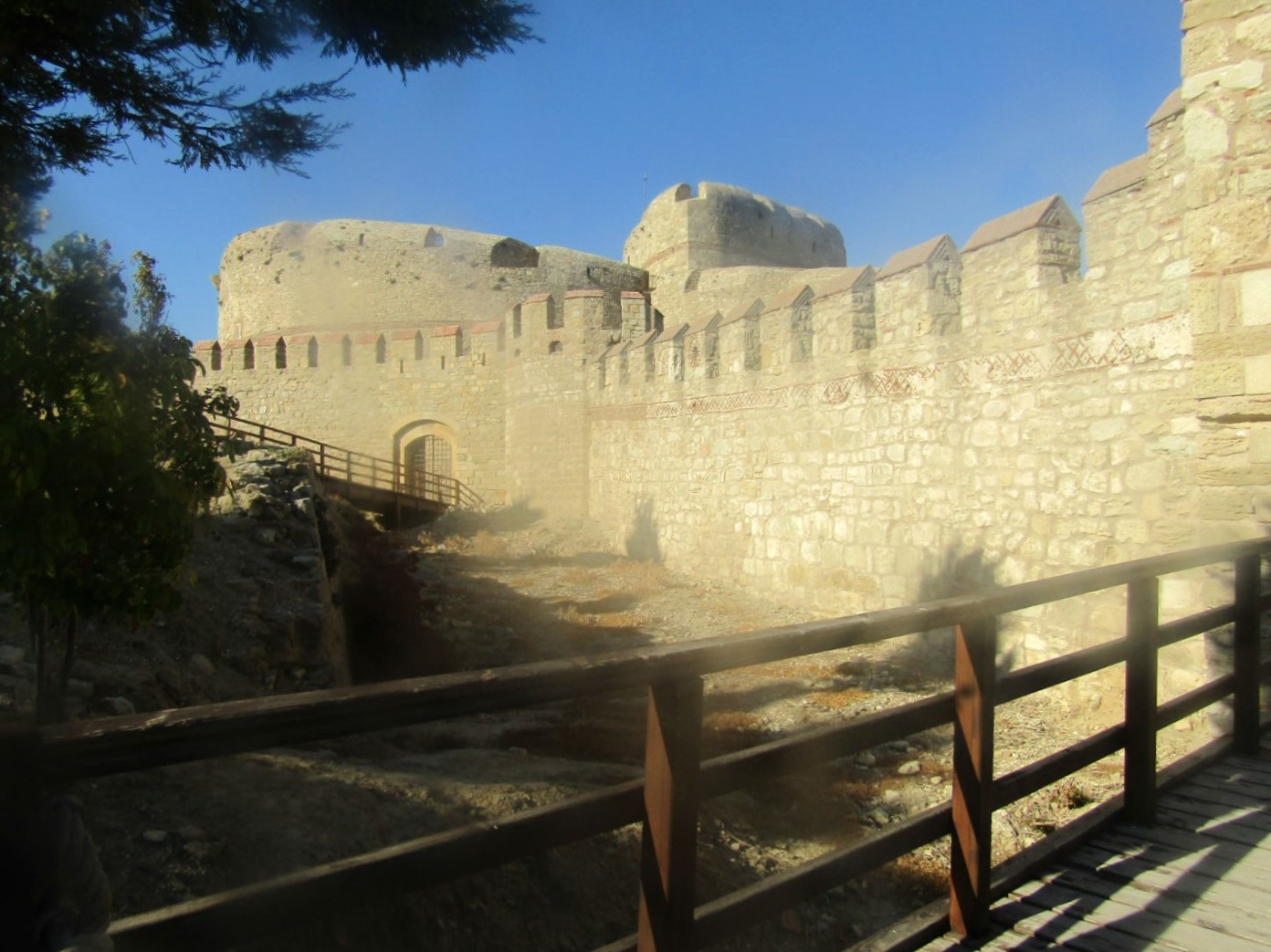
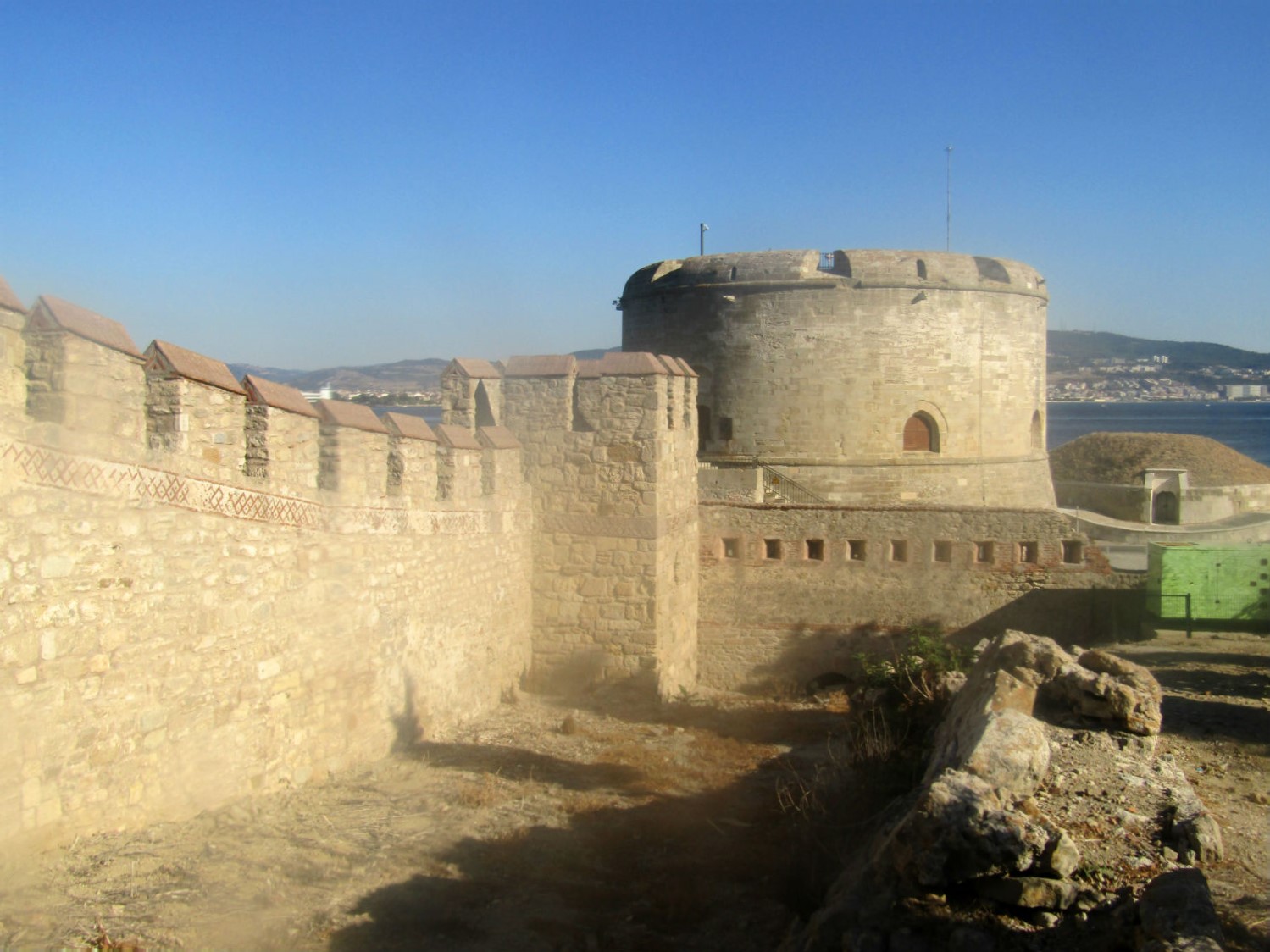
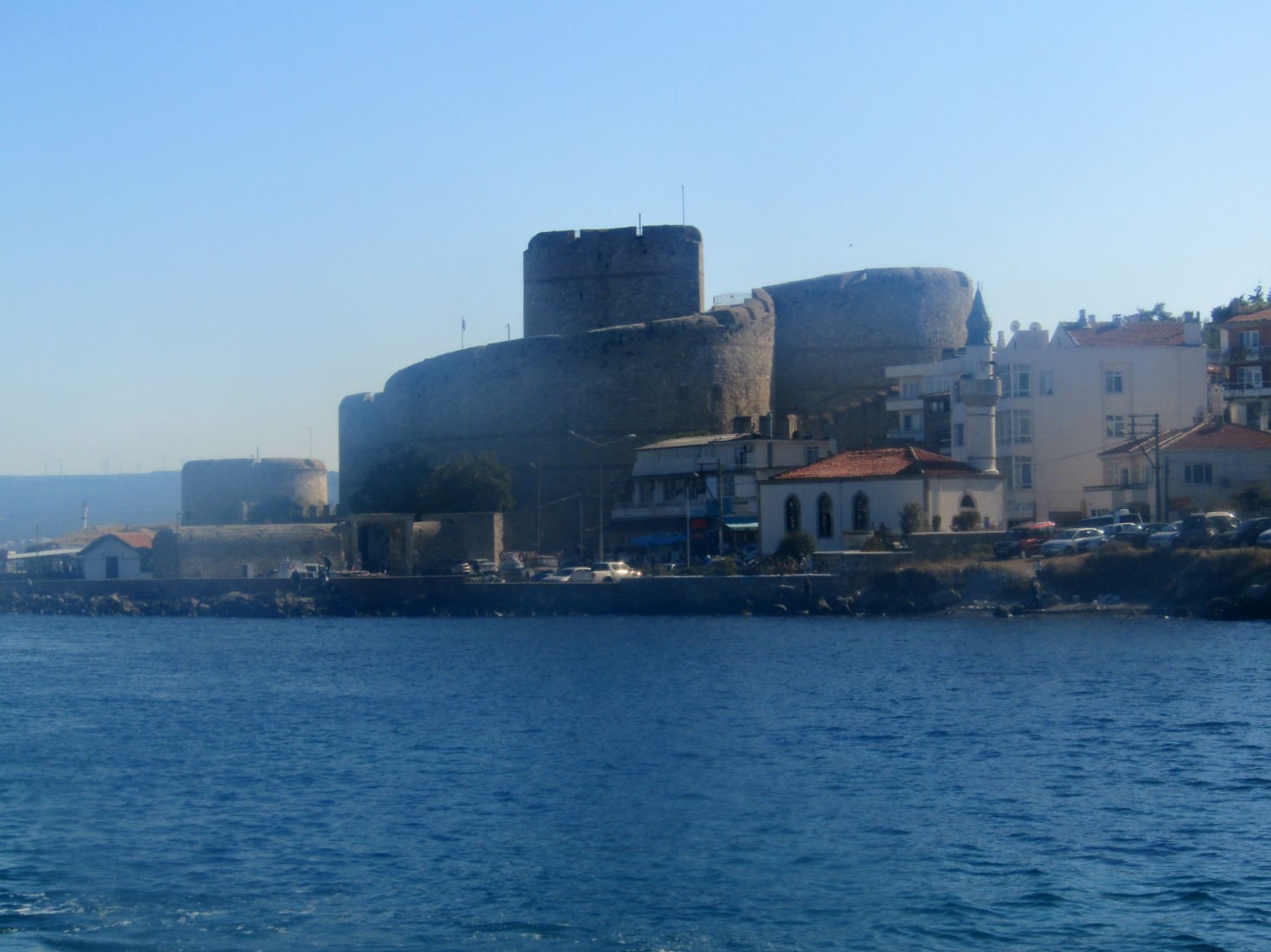 Kilitbahir Castle, Kilitbahir, Eceabat District, Çanakkale Province
Kilitbahir Castle, Kilitbahir, Eceabat District, Çanakkale Province
Conclusion……..
Arriving back in Crowded House at around 5pm, it’s time for a rest then at 7 pm we venture out for our last evening meal at the nearby seafood restaurant we used on Thursday. So the end of our six day stay in Eceabat is near as I elect for an early night in preparation for tomorrow’s return to Istanbul. The tours around the Gallipoli Peninsula and Troy have proved most enjoyable with a vast amount of knowledge gained. Next Page.